Deeper into the Cordillera Central.
Our last post left off with our arrival in Huancavelica, the biggest town we’d seen since leaving Huaraz three weeks prior.
It was here that we met the documentary film & photography crew who shadowed us for the following four days, with one day spent shooting in Huancavelica while we resupplied for the next section, and the subsequent three days as we resumed and followed the Peru Divide south. We can’t say any more about this exciting project for now, except to say that the crew was sent over by one of our sponsors and that the earliest we might see any of the results is the 19th October. I’ll post more about it once we know more.
Having Jason, Ben, Ryan and their Peruvian driver Herwin along was great fun and a good change from our usual routine of relative solitude. We rode typical distances, but took a little longer with the stops for still photography, drone shots and to capture the scope of material that the team was after.
This section of the Peru Divide has continued with the high standards of riding, landscape and cultural experience set by the northern part and has been a fantastic way to see the mountain heartland of Peru.
In contrast to the usual roads we ride, most of the first day out of Huancavelica was pavement, with very little traffic, but the scenery was no less amazing with lots of mineral banding in the hillside. We passed through a couple of very quiet communities, with nothing more than basic tiendas and an open restaurant if you’re lucky.
There was quite a lot of this going on, as Jason worked his magic with the video camera…
… capturing me and Hana capturing the things we do and the people we meet. This lovely old lady had helpfully obliged when we asked about filling our water bottles in one small village.
Despite having a support vehicle along, we still rode self sufficiently as we usually do. But we did score the odd cup of coffee off the team.
Any particular moment of the day might turn into a shoot if Jason and Ben (photographer) saw something they liked and that fit into the brief.
The first night out of Huancavelica we camped at 4640m. A brief snowstorm rudely interrupted dinner under the stars and we retreated to the tents. Morning dawned calm and crisp, with a thin layer of frozen snow covering the hills. That morning was -8c. Our usual lows when camping above 4000m tend to be between -5c and -10c, which means frozen water bottles and generally cold pack ups, unless we’re lucky to get some morning sun. We usually try and camp with early sun in mind, but sometimes you just have to take whatever flat or sheltered spot is available. To get the most out of each day we usually wake between 4.30am and 5.30am – our routine right through Peru.
Campesinos’ (peasant farmers) dogs often pay us a visit. Some stand their distance, barking their heads off, but they’re usually hungry and more interested in food than scaring off gringo ciclistas.
A steady and sometimes loose climb to Punta Caudalosa Chica followed in the morning – one of the nicest passes of the ride.
Just us, among a richly coloured landscape. Unfortunately for the film crew, this one proved to be uncrossable in the 4×4. They made it to the pass itself ok (with a short detour to avoid a washout), but the washouts on the east side of the pass were too severe to drive, so the crew backtracked and made a detour out to Huachocolpa and then up another valley to rejoin us for the next pass, Paso Esperanza.
Meanwhile, we crossed the washout sections and then had a fun downhill into the valley at the base of Paso Esperanza.
When in Rome… Coca leaf is a daily staple for many people living in the mountains of South America. Although the precursor for cocaine, when chewed in this form it provides a very mild energetic uplift and clarity of thought – akin to a strong coffee. It’s also said to be beneficial for dealing with altitude and indigestion (due to its numbing effect).
A long afternoon’s ride got us out to Licapa, a small highway town. We rolled in just before dark, and of course to the great interest of the local kids who see few gringos pass through here.
There was a very basic municipal hospedaje there and after some asking around we finally tracked down the key-holder and moved into some rustic rooms for the night. By then the towns restaurants were closed too, but with a little more asking around we arranged someone to cook us some lomo saltado for dinner too. There is always somebody who’s keen to earn some money in these villages – whether a formal restaurant or not.
Licapa in the morning sunshine.
The Peru Divide’s next pass out of Licapa is a paved one, but after a long descent down the other side we turned off the highway and onto dirt, headed for Santa Fe.
A staunchly traditional village, Santa Fe was fully of colourfully costumed women, many of whom had walked 2-3 hours from their homes on the puna to pick up supplies.
The road on took us past big herds of alpaca, grazing on the pampa, and resplendent always with their colourful ear tags.
Finally the road kicks up more steeply for the big climb to Abra Ritipata, giving us great views as we look over our shoulders at the hard earned miles of the morning.
Another high one, and the GPS read closer to 5000m than 4900m.
That night, our last with the crew, we camped on a high ridge overlooking the Rio Pampas and above the town of Paras. A stunning spot for a final night and farewell to the crew. We indulged in some fine whiskey (and not so fine dining – that would have to wait).
The following morning the crew headed back to the highway near Santa Fe, for the long drive to Lima, while Hana and I dropped down to Paras. From there a peaceful dirt road led us along the edge of the canyon, past decaying bridges and a couple of small towns.
Mayoral elections are coming up in Peru and campaigns are running full force, with flag-covered 4x4s visiting far flung villages and many buildings painted up with different party’s slogans and logos. It’s much more in-your-face than we’re used to, with loudhailers used to promote the party line and parades with rent-a-crowds used to make the support look stronger than it is. This village was in the midst of a party meeting that had captured the attention of most of the inhabitants.
Looking down on the twin villages of Lloqllosqa and Vilcanchos either side of the Rio Pampa.
The road climbed away from the canyon and up into a side valley, leading us to Totos. There we checked into a hospedaje, spent the night, and leaving the bikes there, caught a bus to the small city of Ayacucho the next day – a trip of 115km that took 4.5 hours! I had an article to work on for the first edition of the new Bike Packing Journal, a new publication from the Bunyan Velo and Bikepacking.com team, but with no internet in the small villages of the Peru Divide route we had no choice but to head to a bigger place. But four days in Ayacucho made a really nice break; with the novelty of food choices, ice cream, bakeries and a comfortable room. The climate there is very pleasant, with hot days and cool (but not freezing) nights. A good ‘holiday on the holiday’ as they say.
Ayacucho, like many of Peru’s Andean cities, is relatively isolated from the rest of the country. It has a rich history – a sense of which it retains well with its spacious and groomed plaza, surrounded by well preserved colonial buildings. Notably, the notorious Sendero Luminoso (Shining Path) communist revolutionary movement was founded here. Considered a terrorist organisation, the group lost momentum with the capture of its leader in 1992, although elements of it still prevail; in 2017 three police officers were assassinated by the group in a raid.
Do you enjoy our blog content? Find it useful? We love it when people shout us a beer or contribute to our ongoing expenses!
Creating content for this site – as much as we love it – is time consuming and adds to travel costs. Every little bit helps, and your contributions motivate us to work on more bicycle travel-related content. Up coming: Gear reviews and GPX tracks.
Thanks to Biomaxa, Revelate Designs, Kathmandu, Hope Technology and Pureflow for supporting Alaska to Argentina.

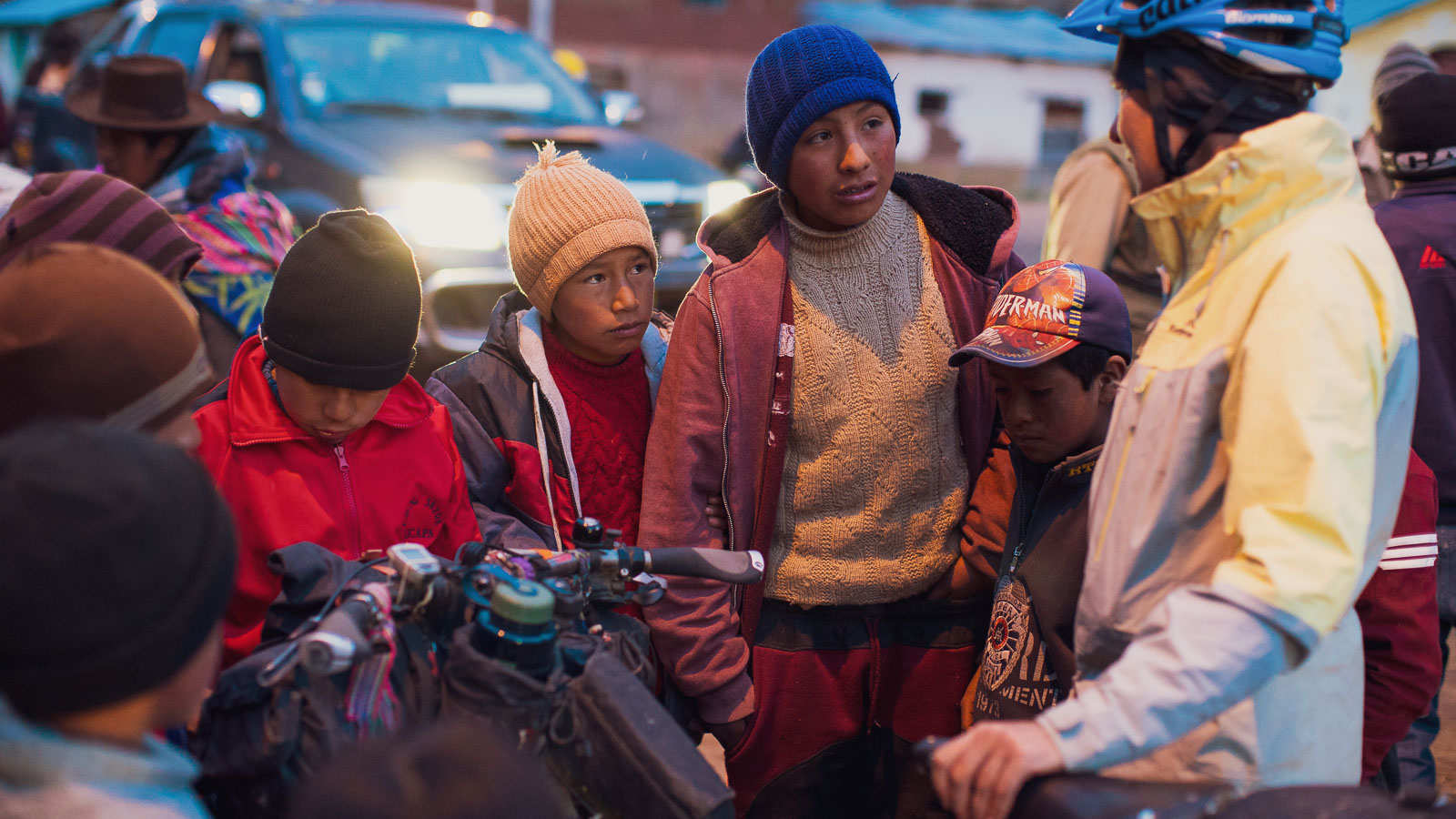
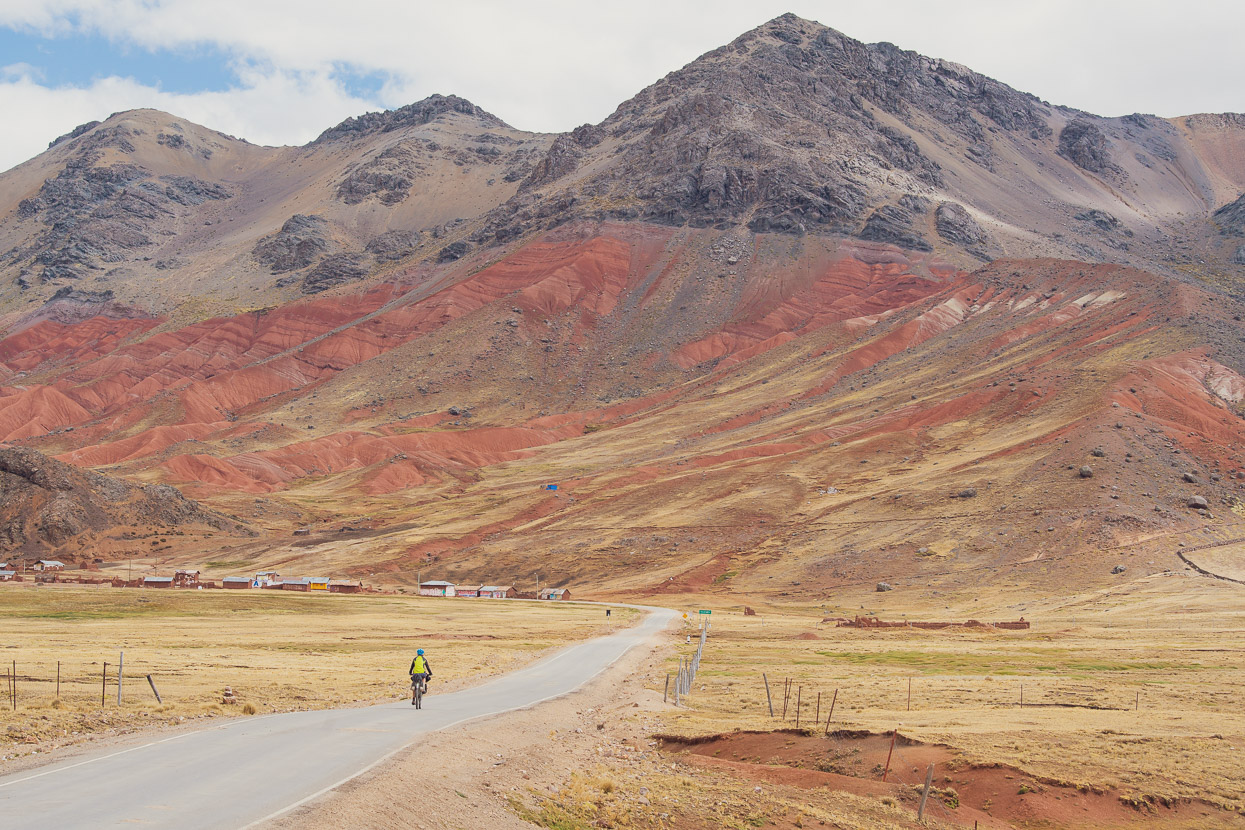
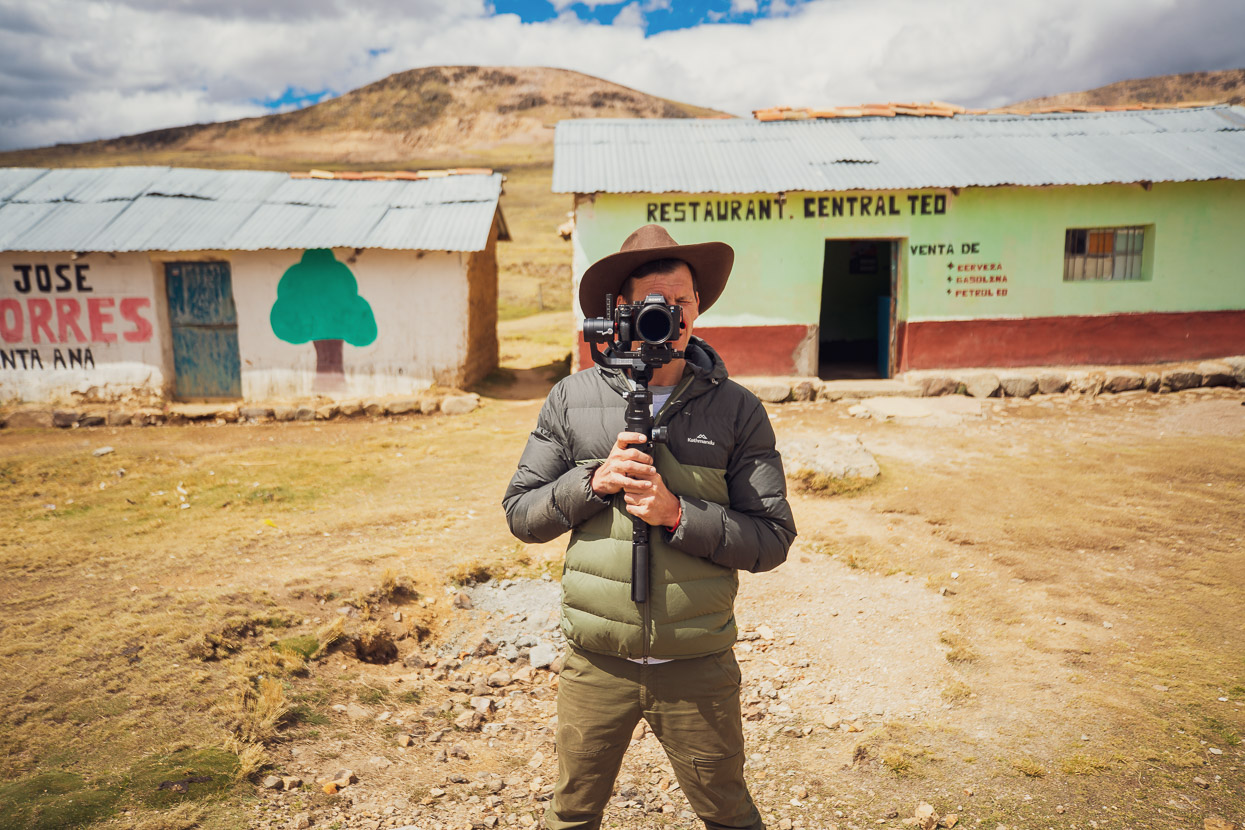
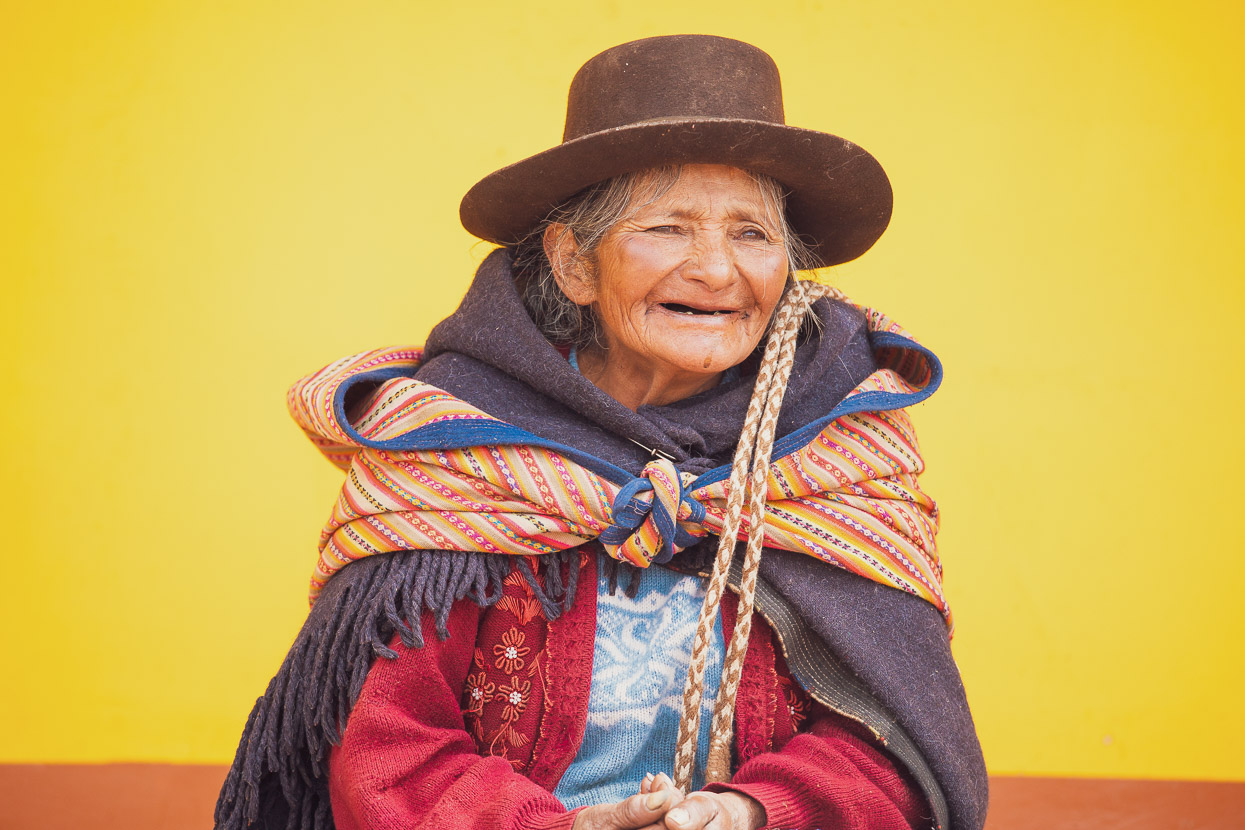
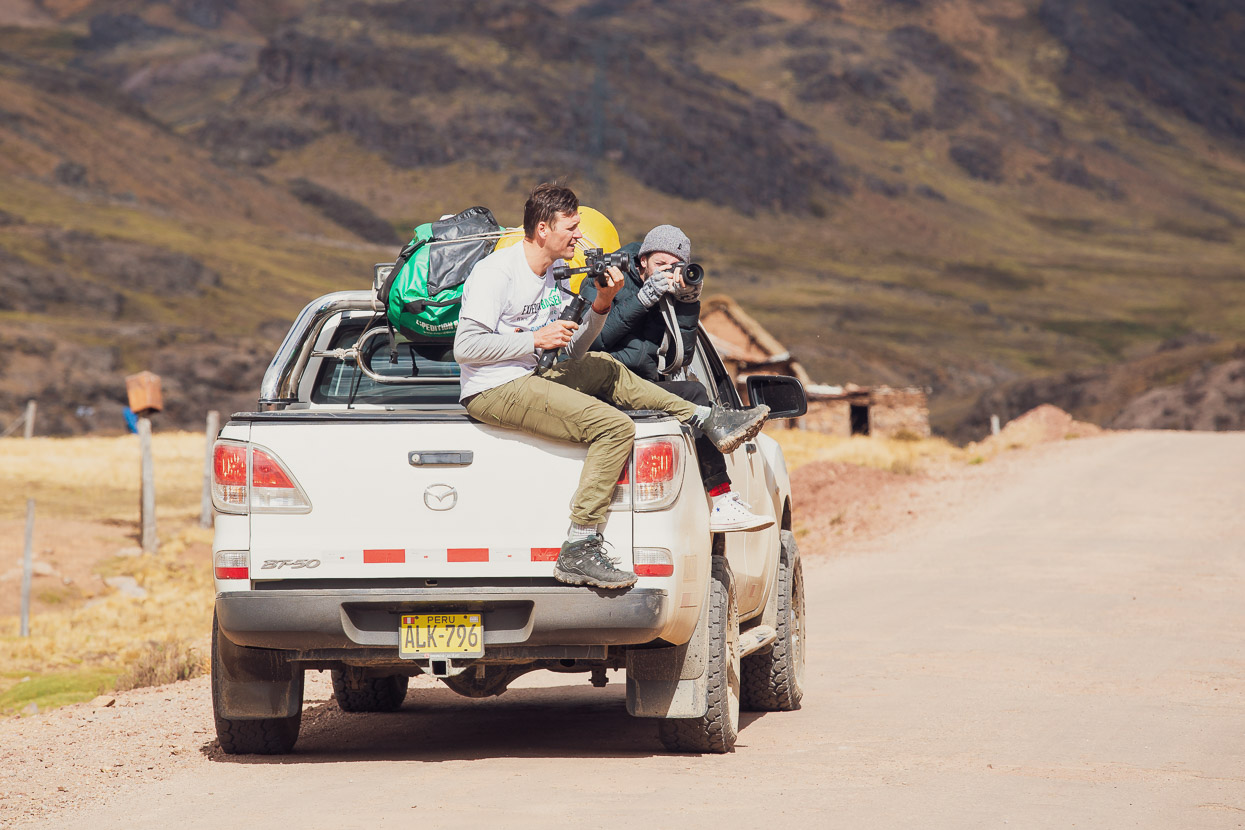
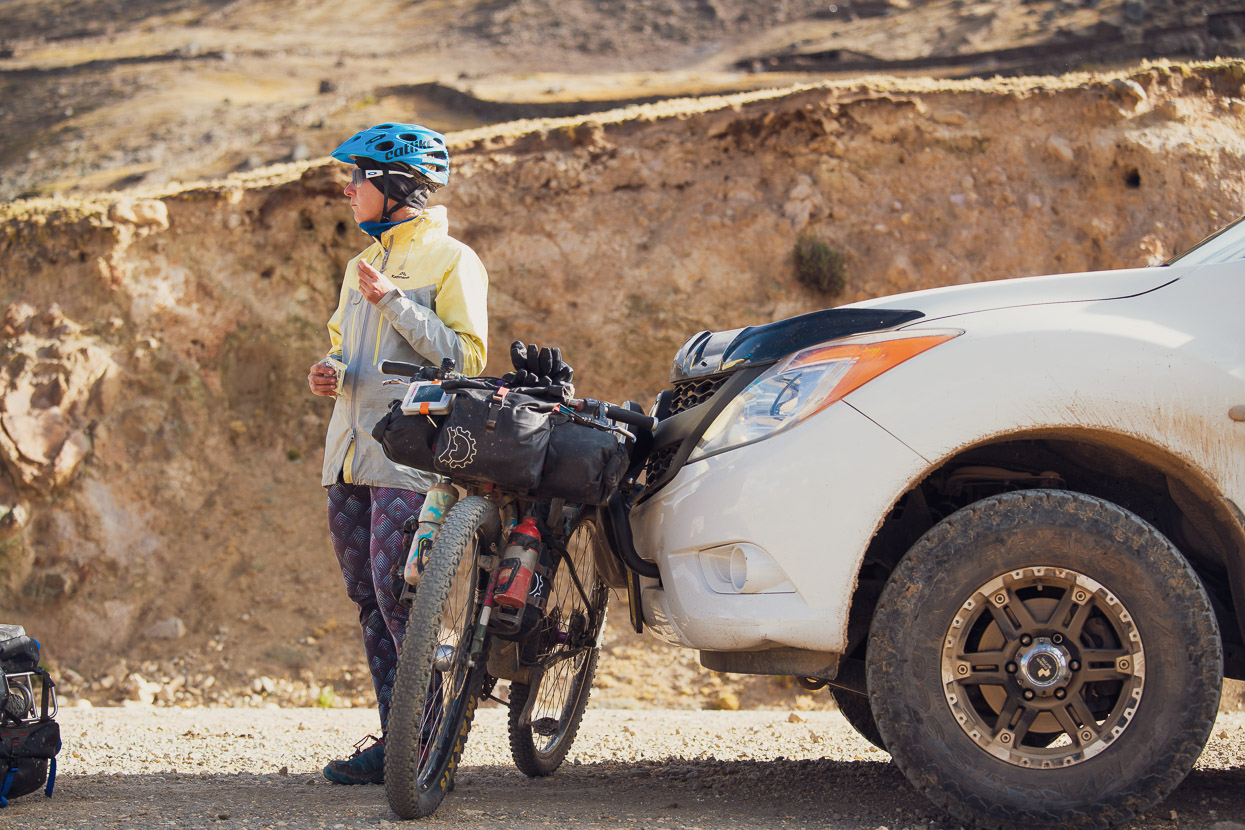
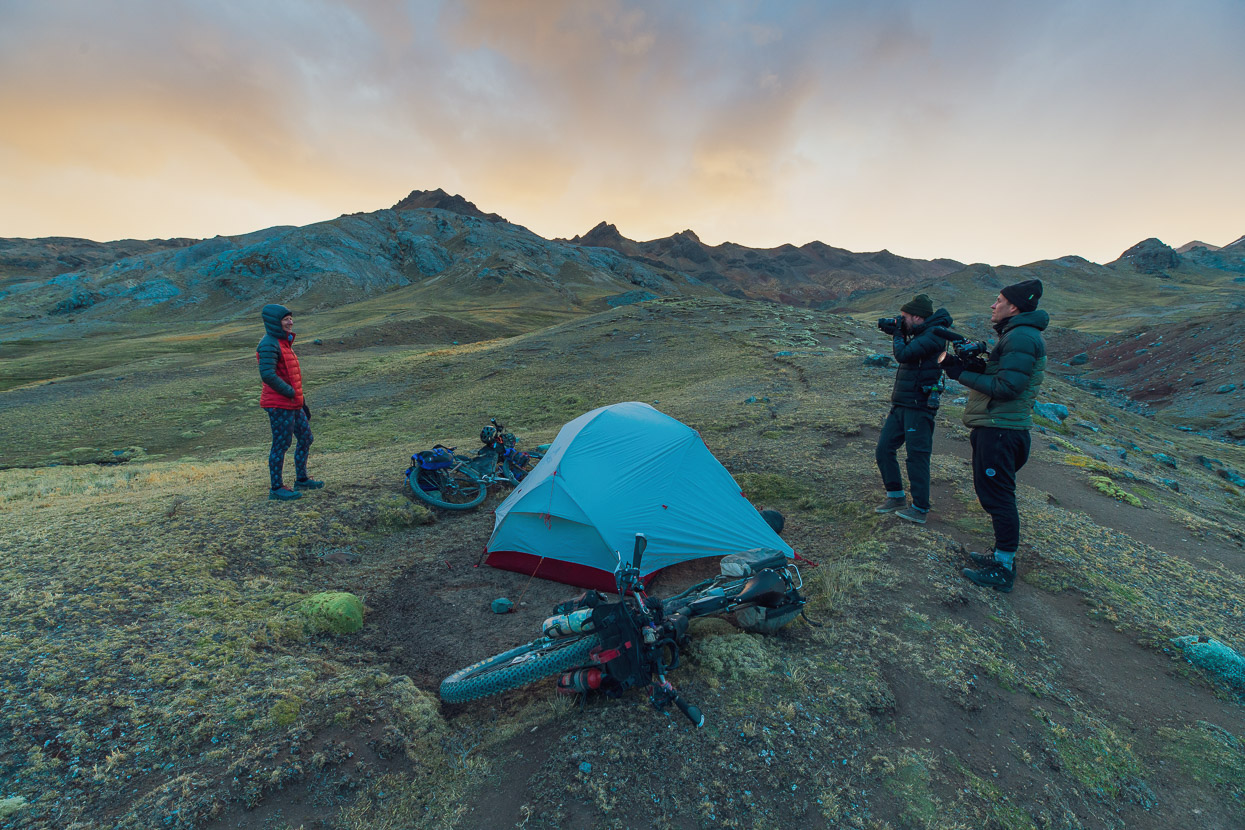
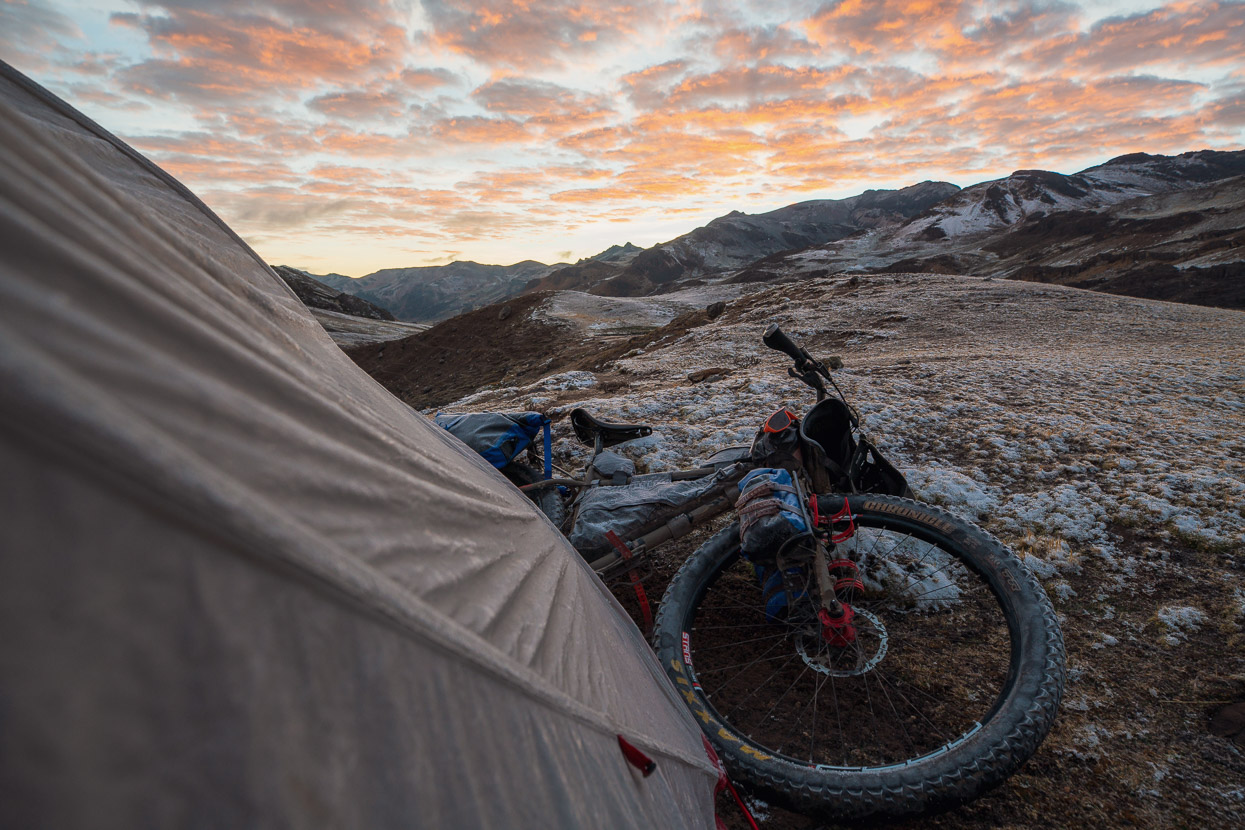
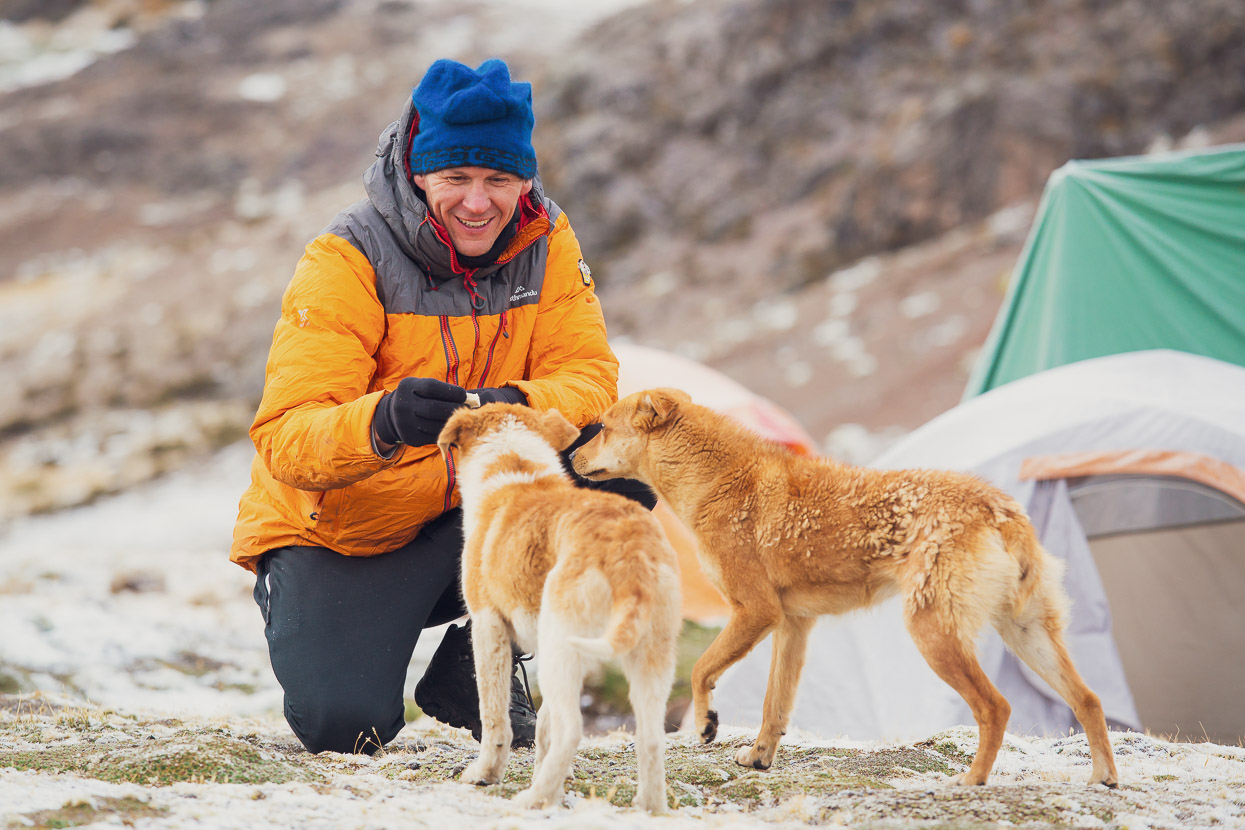
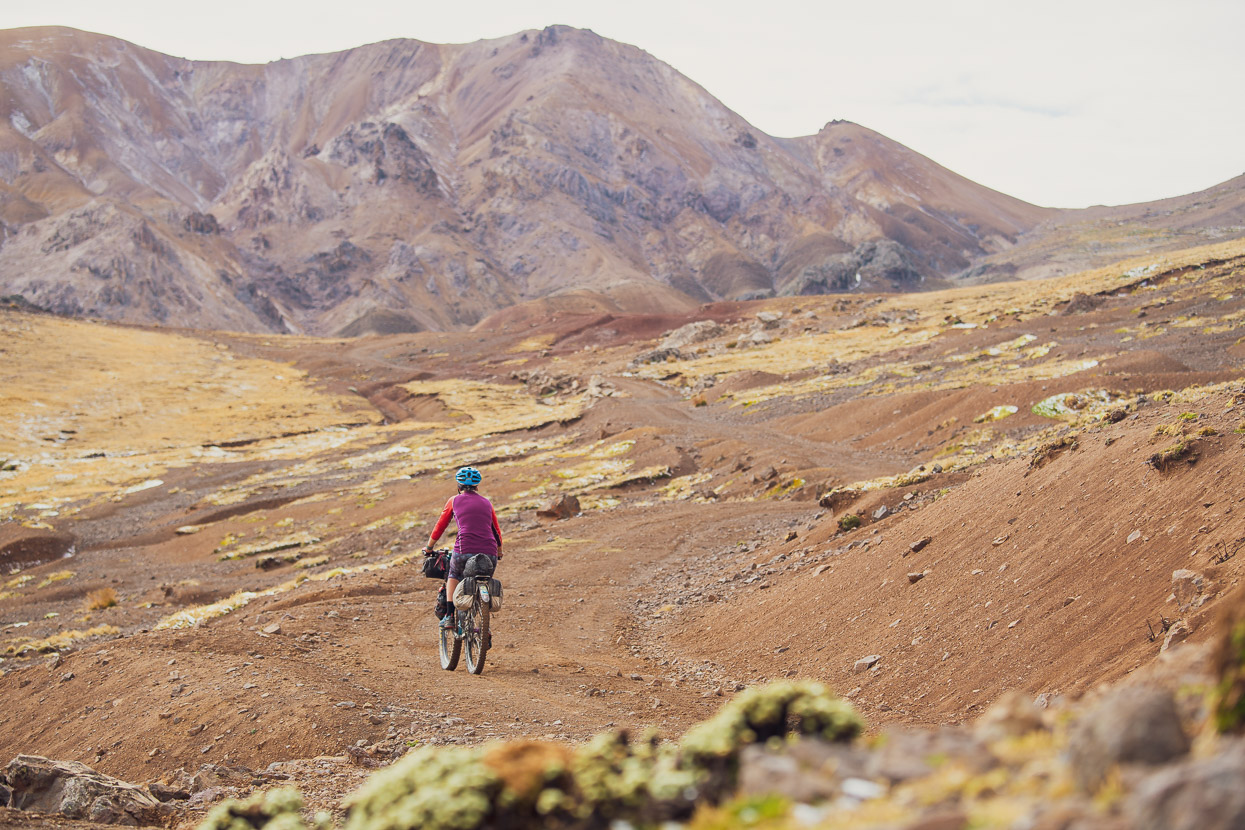
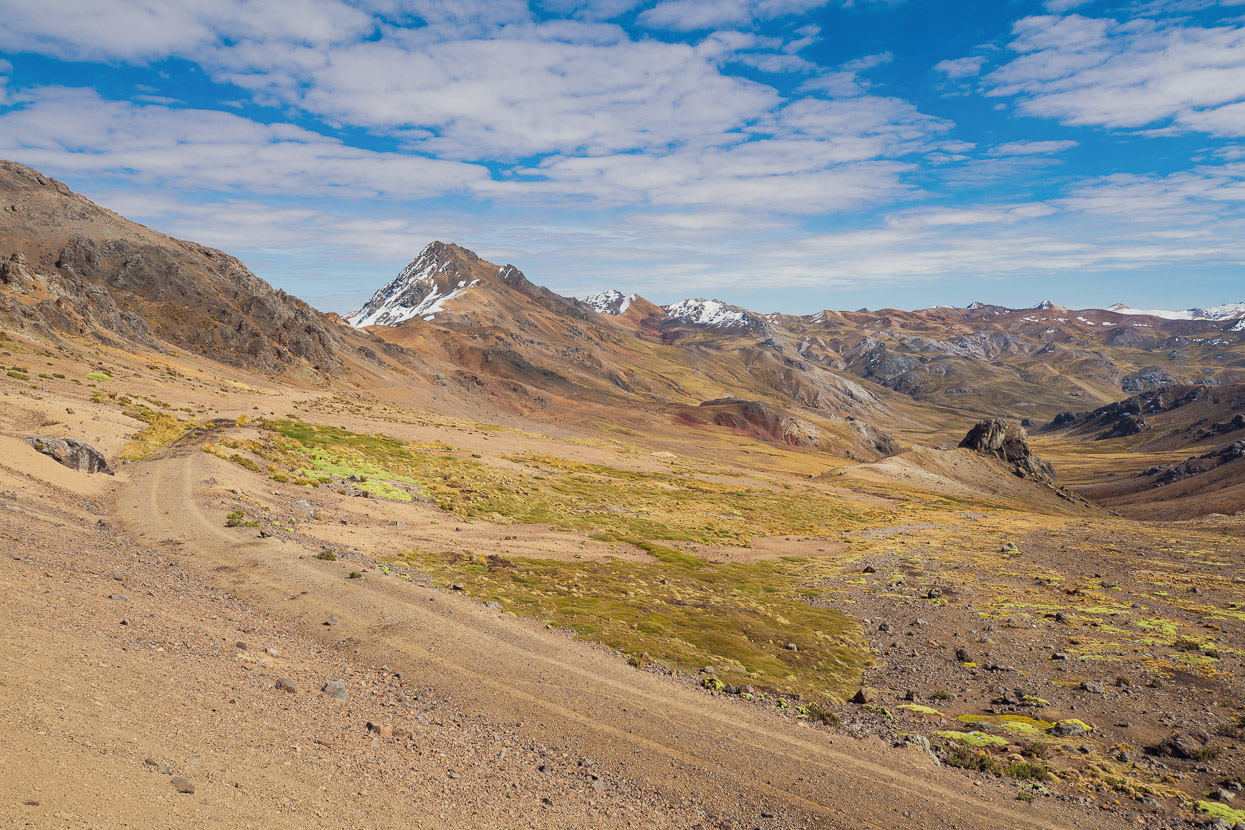
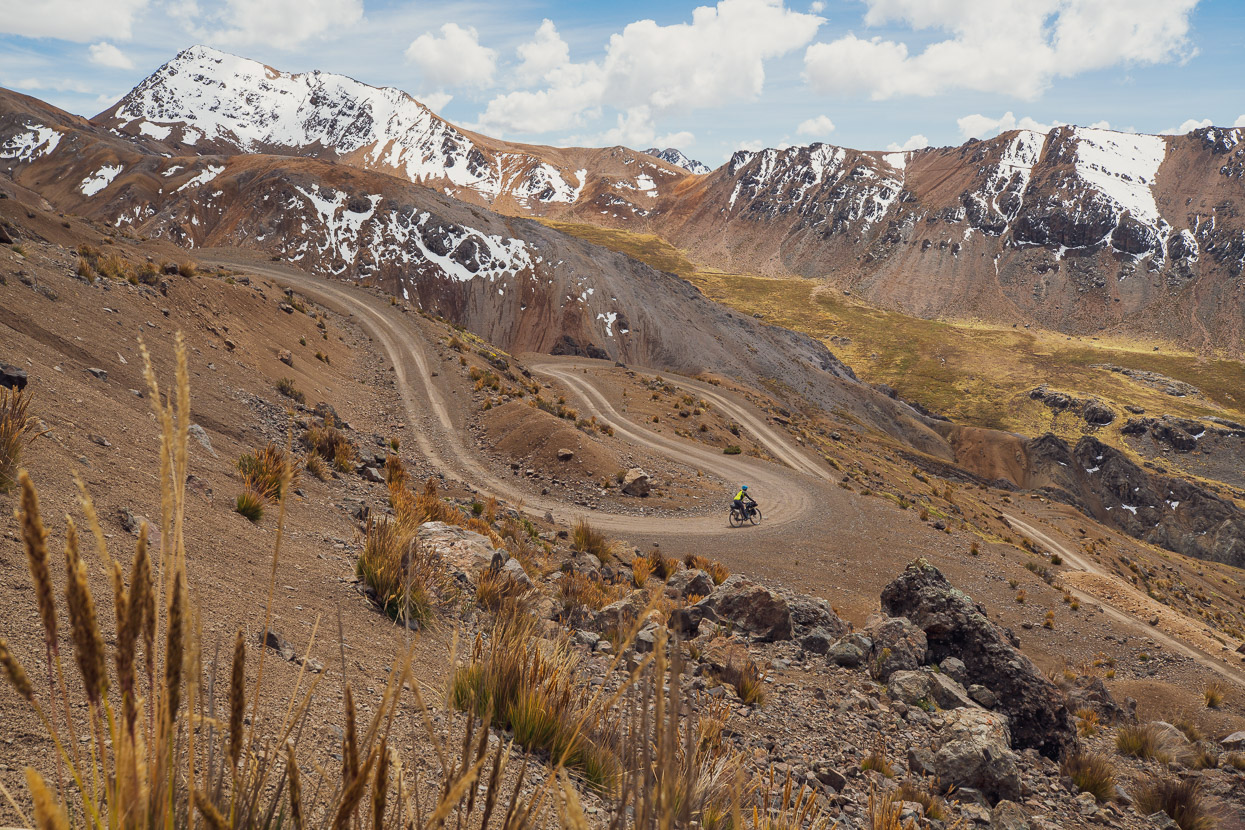
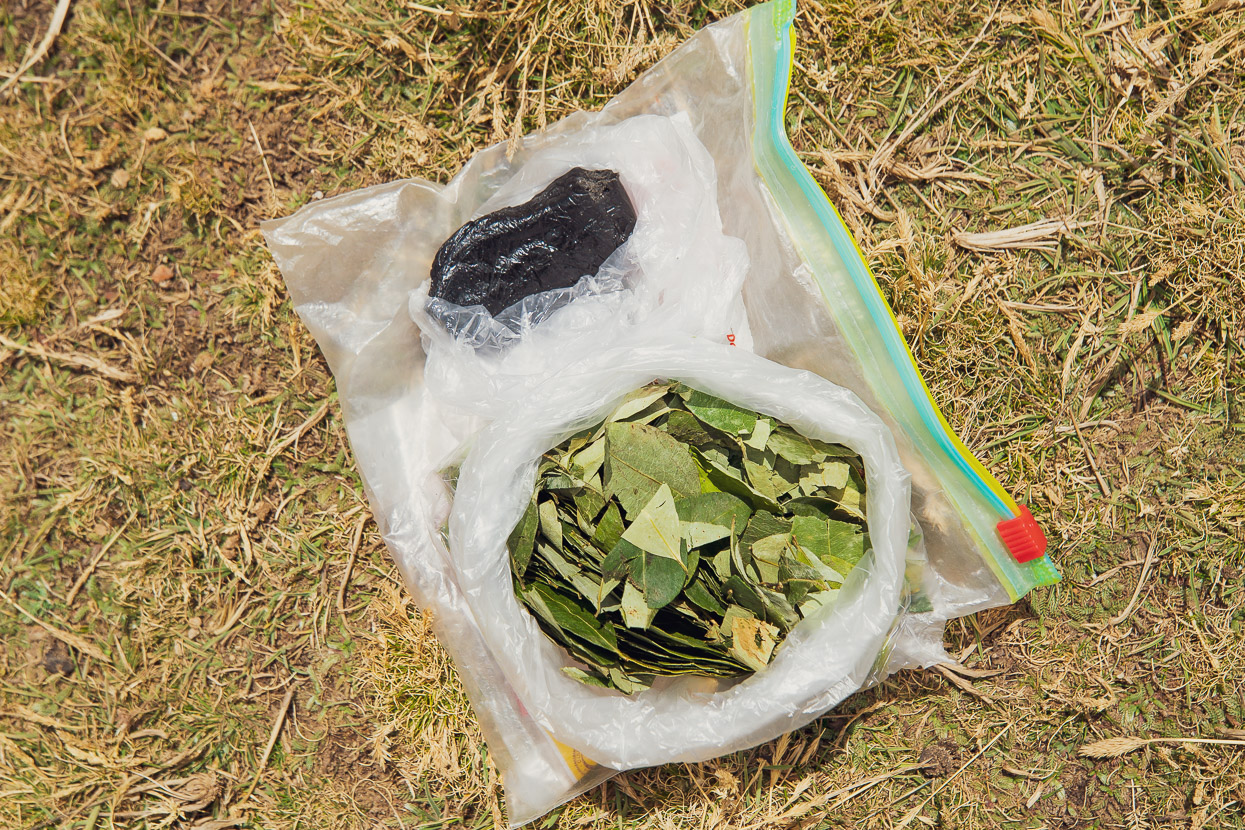
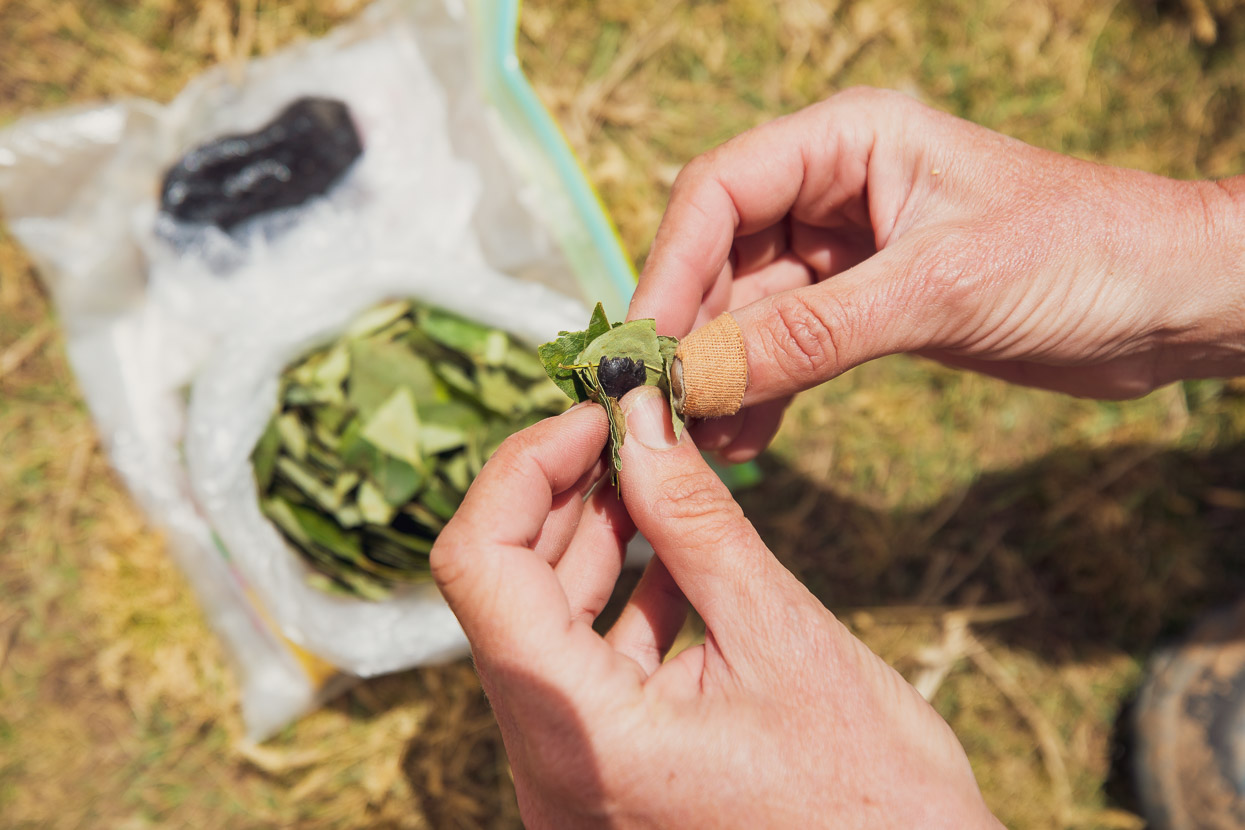
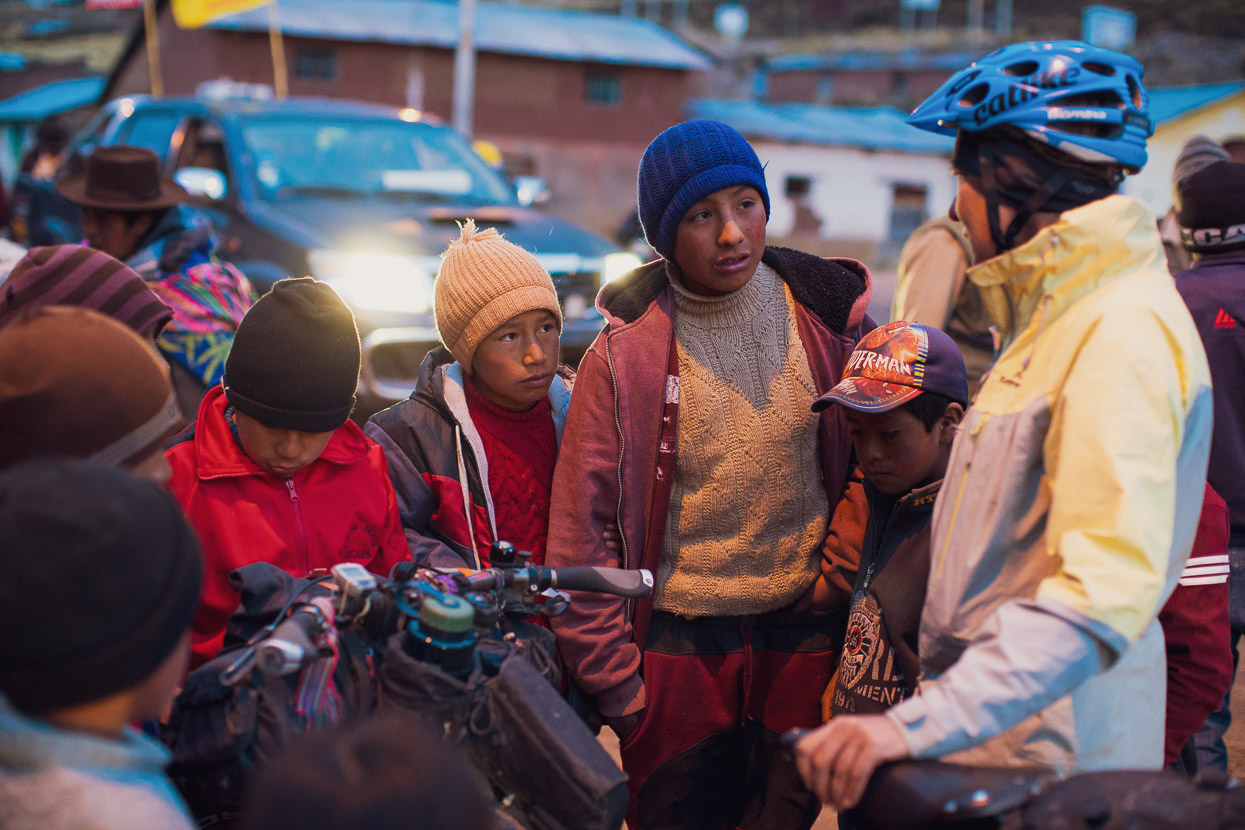
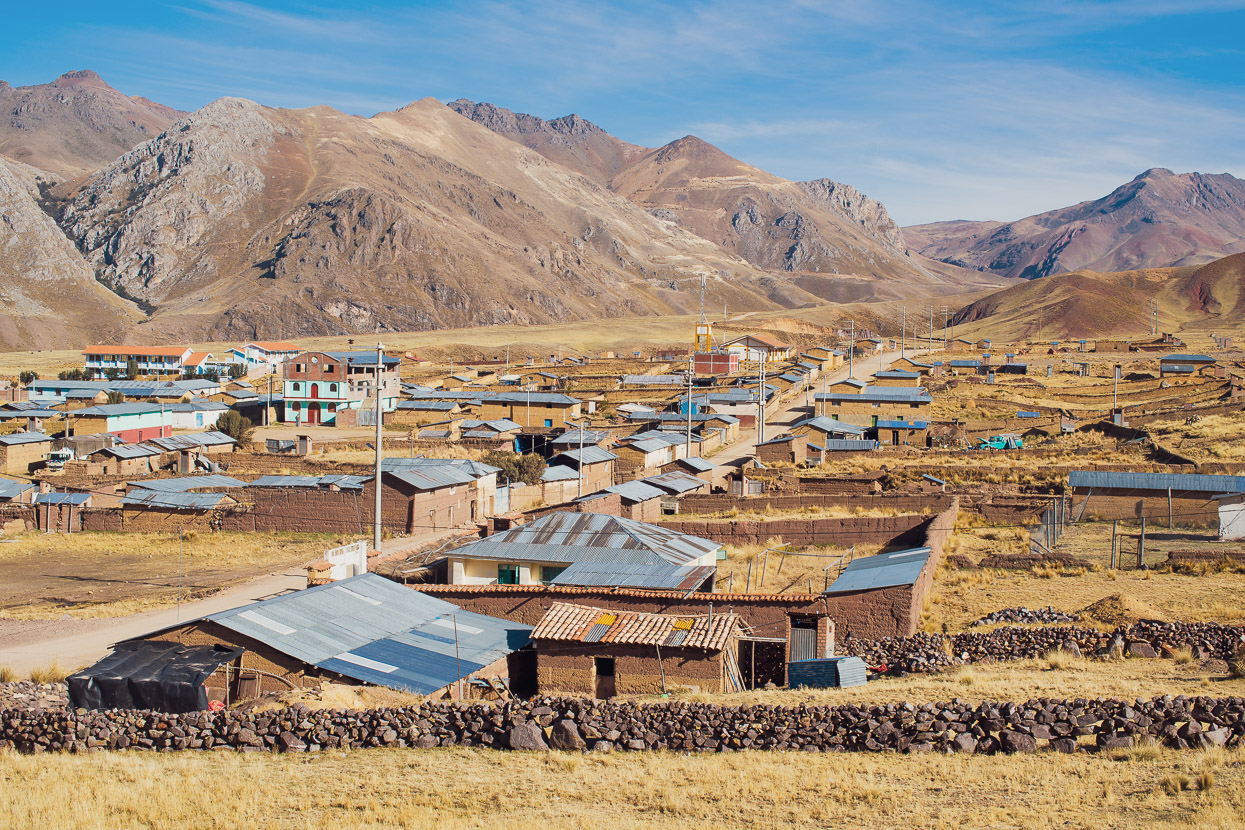
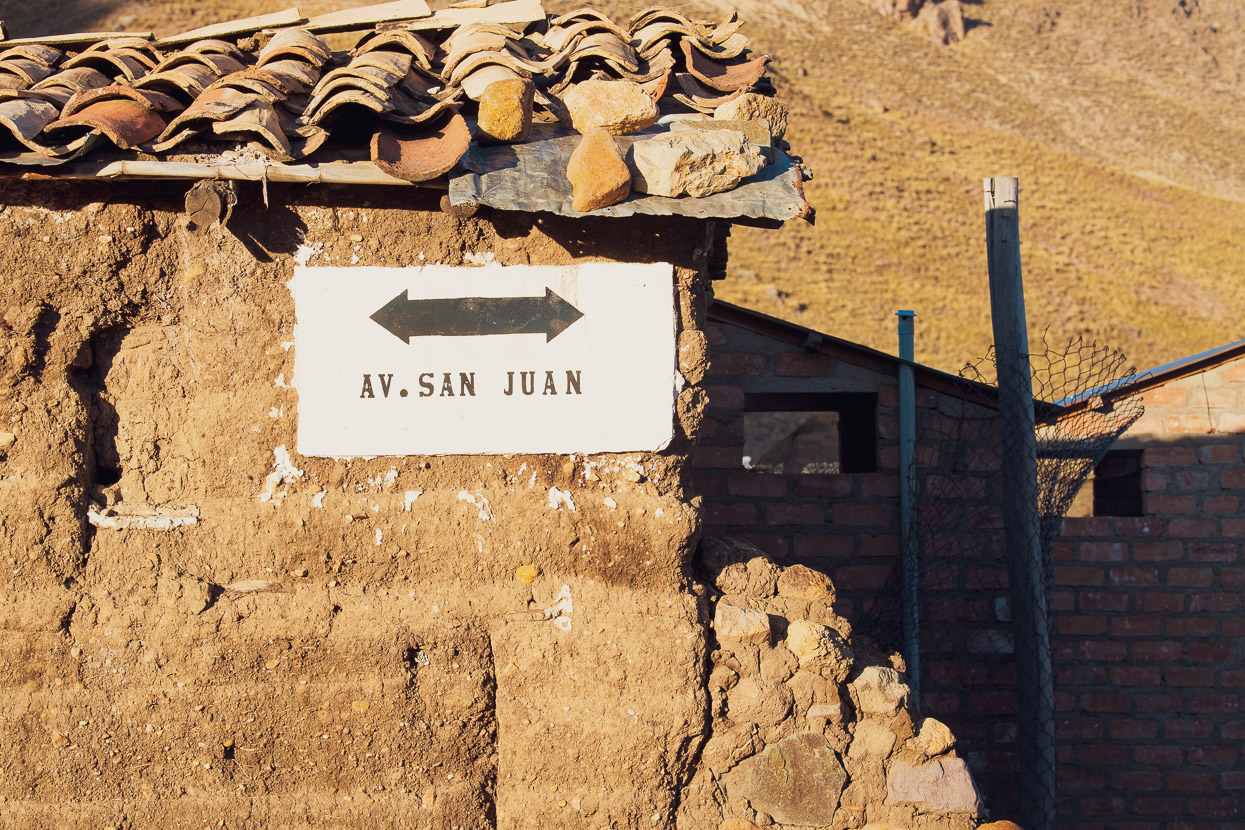
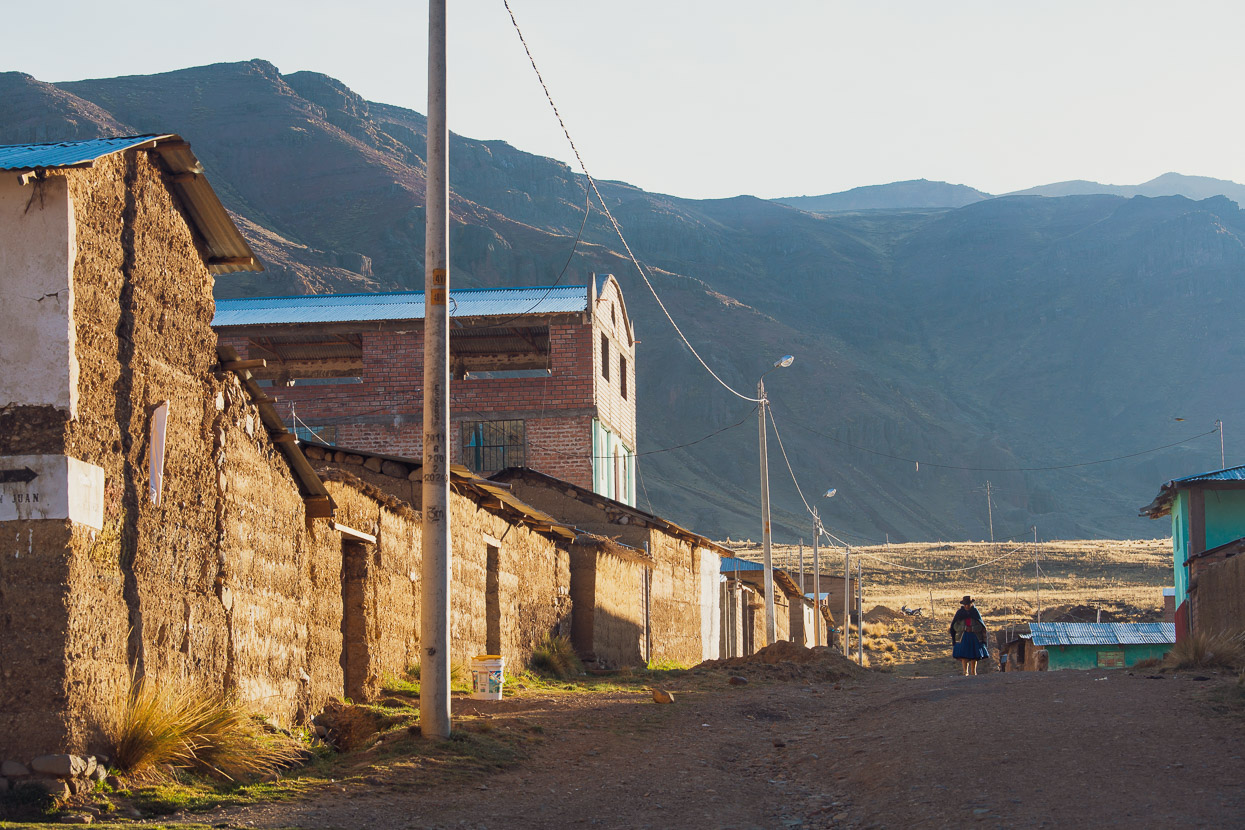
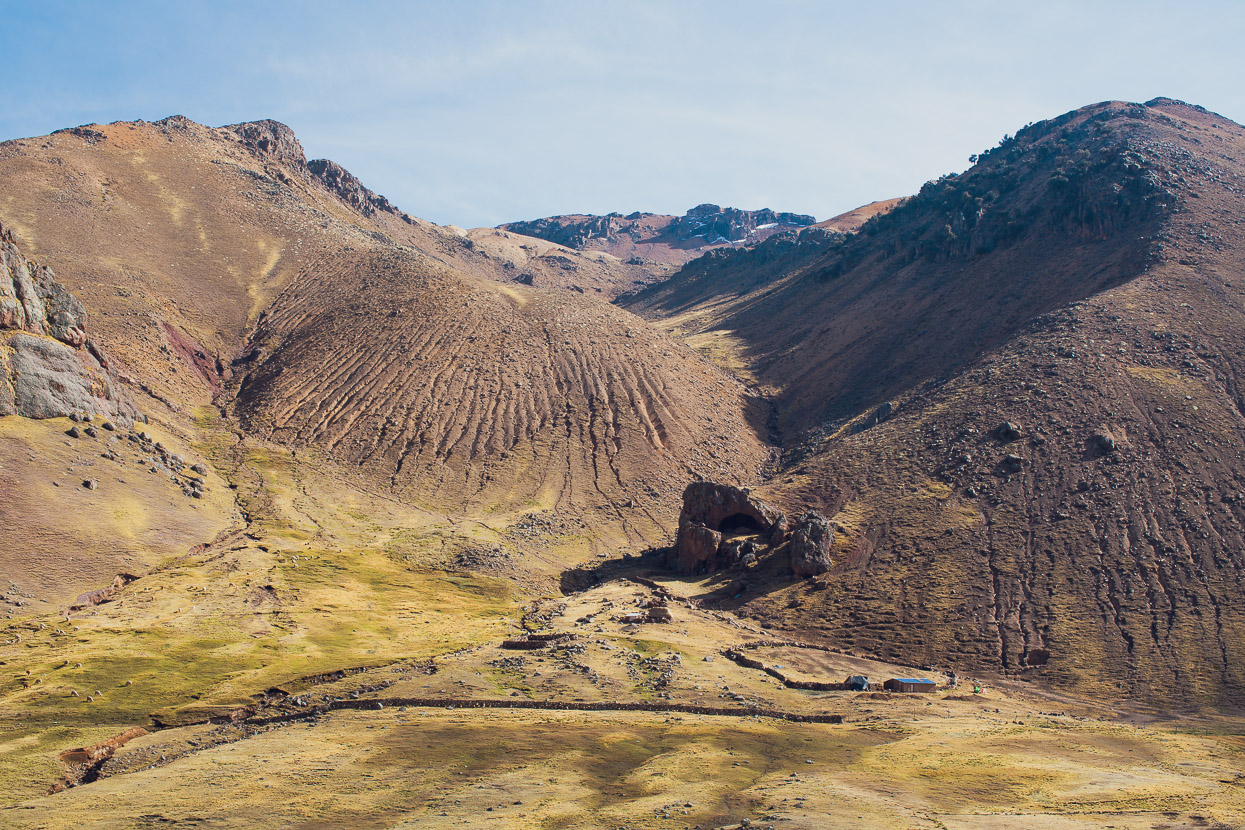
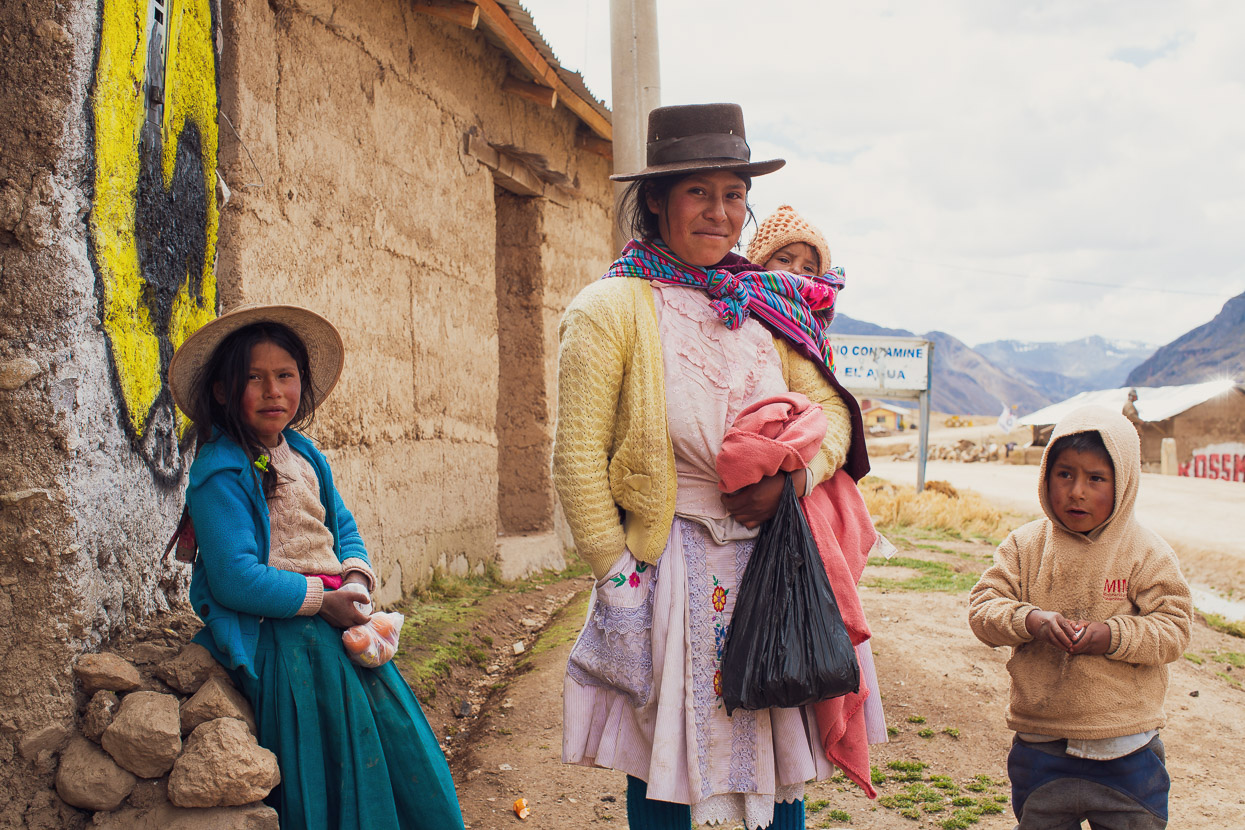
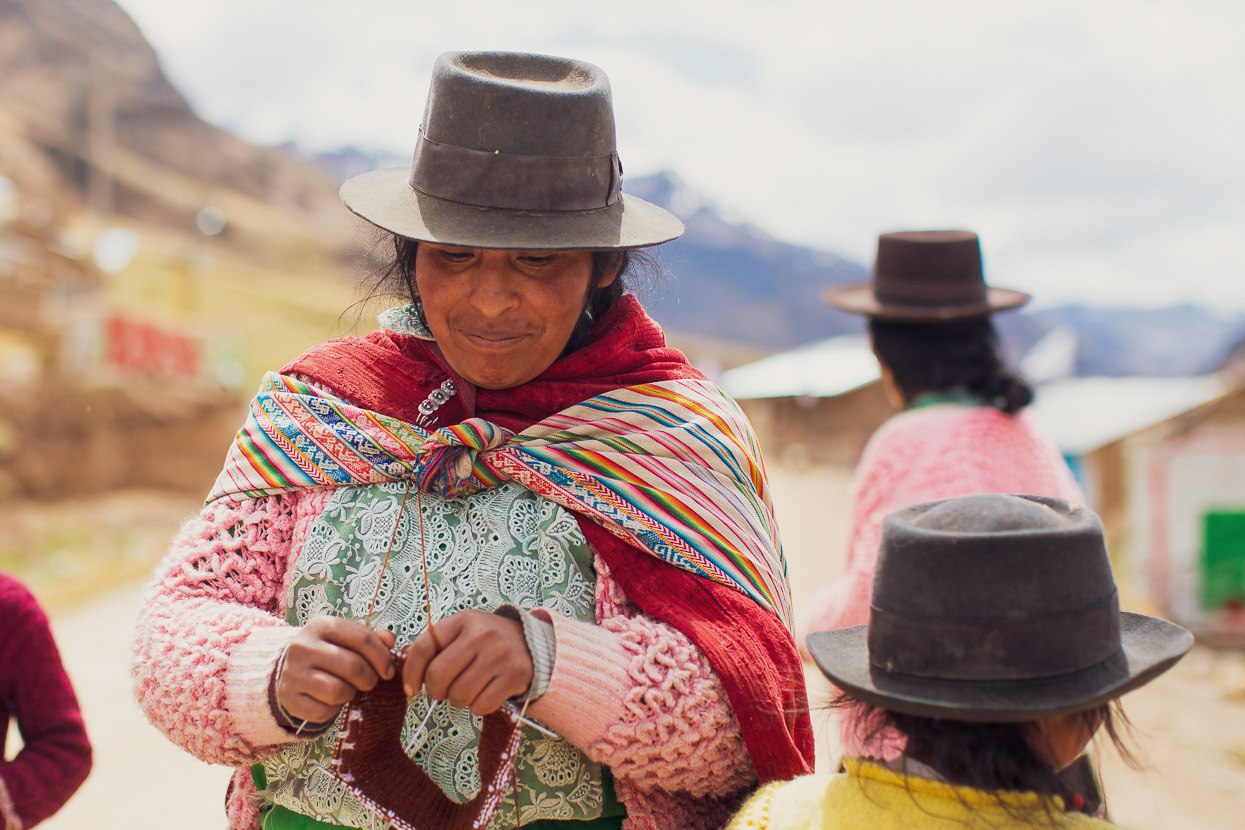
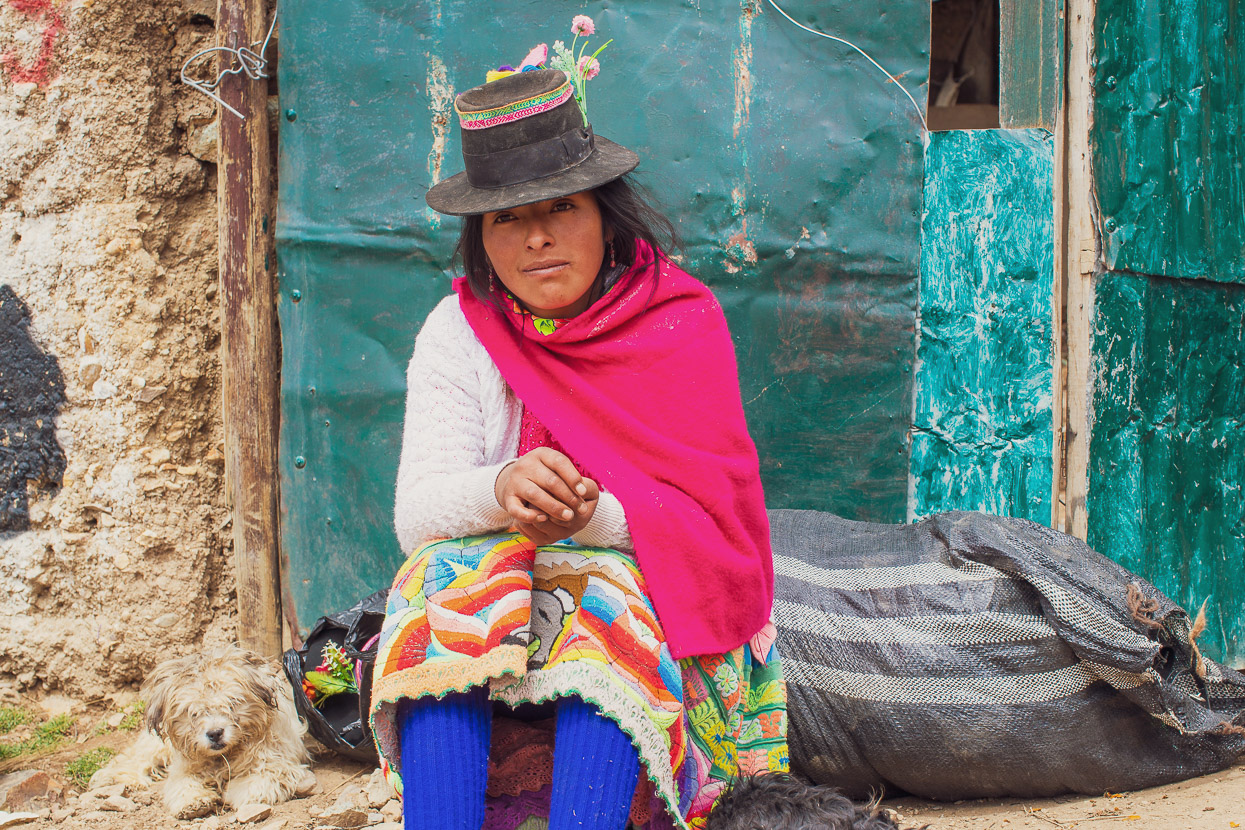
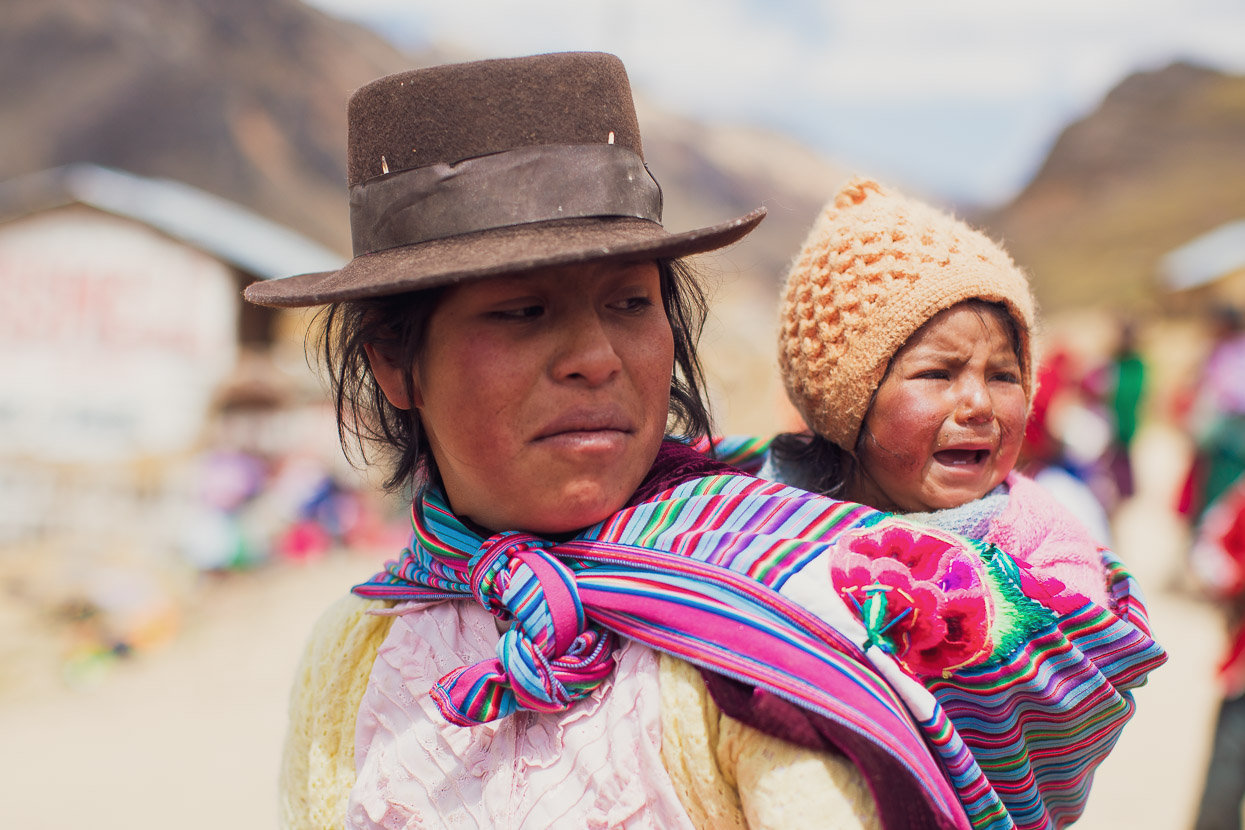
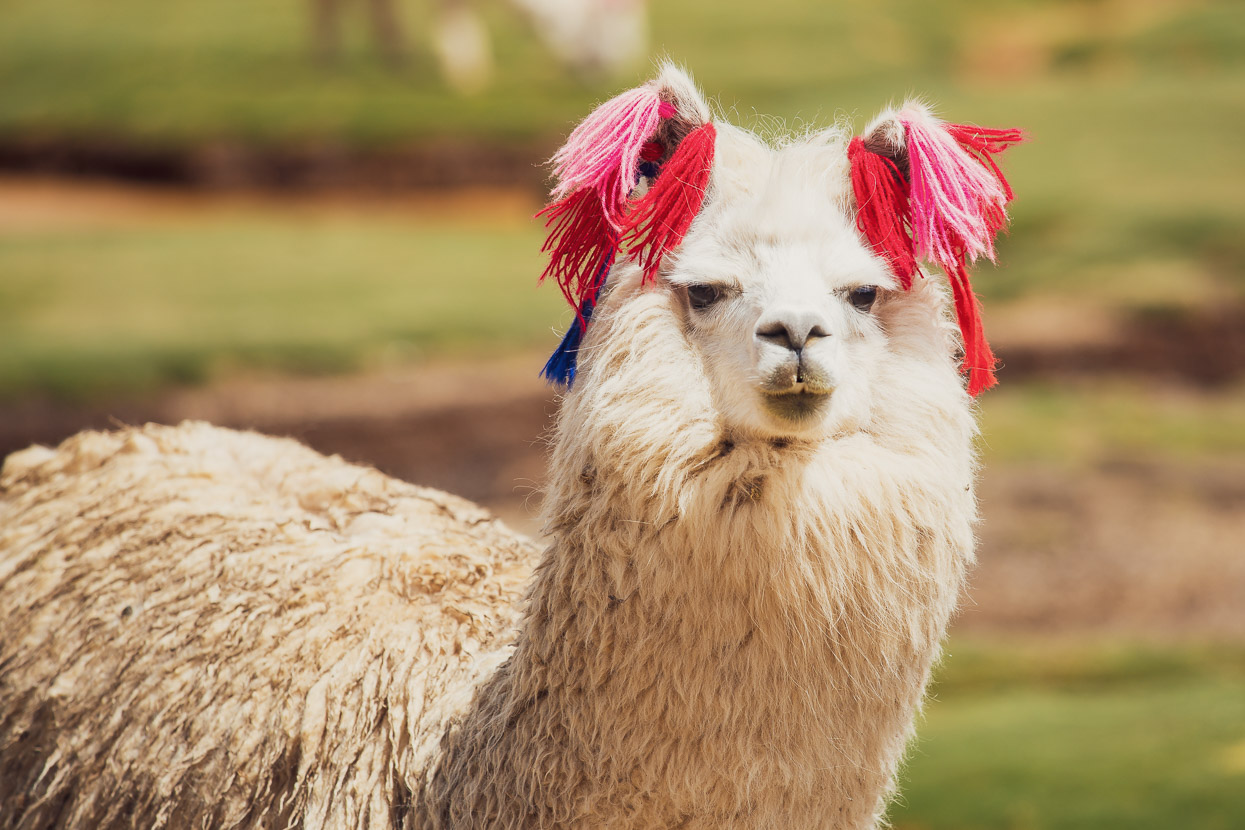
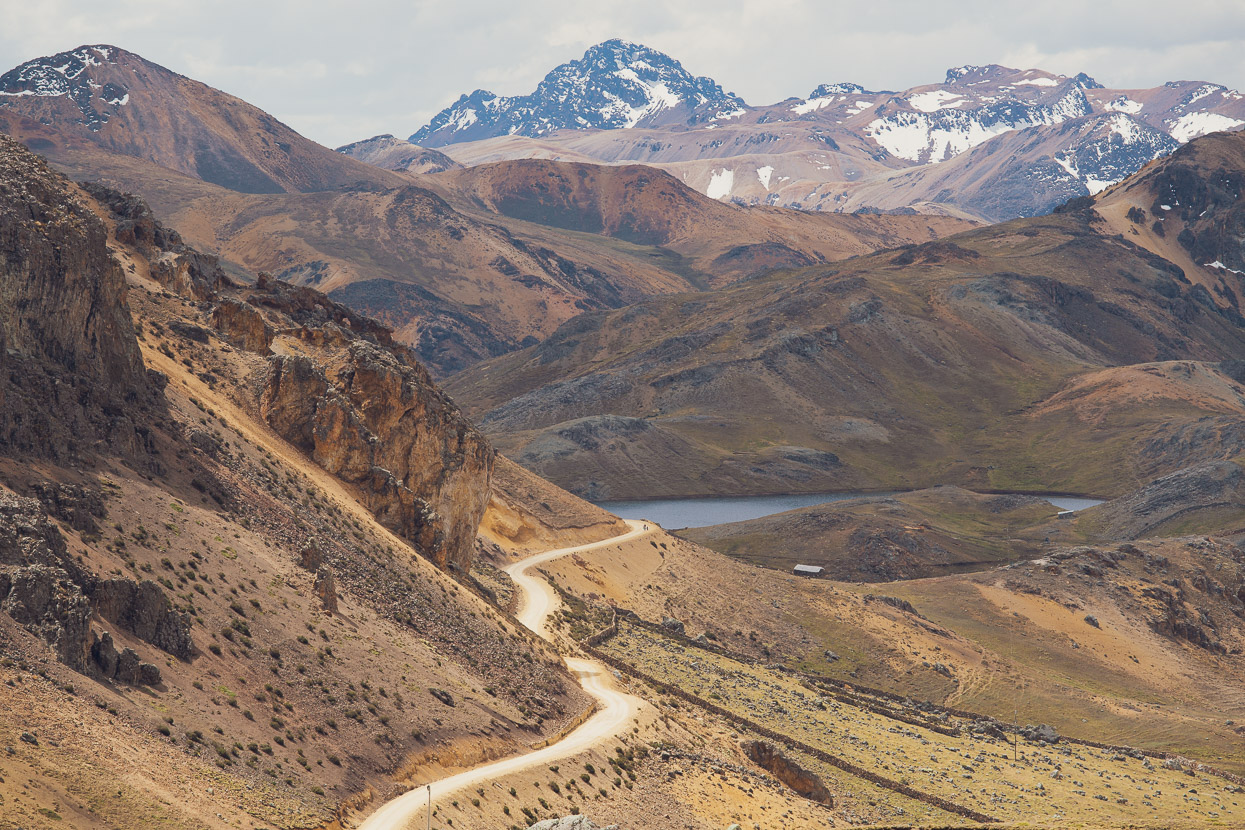
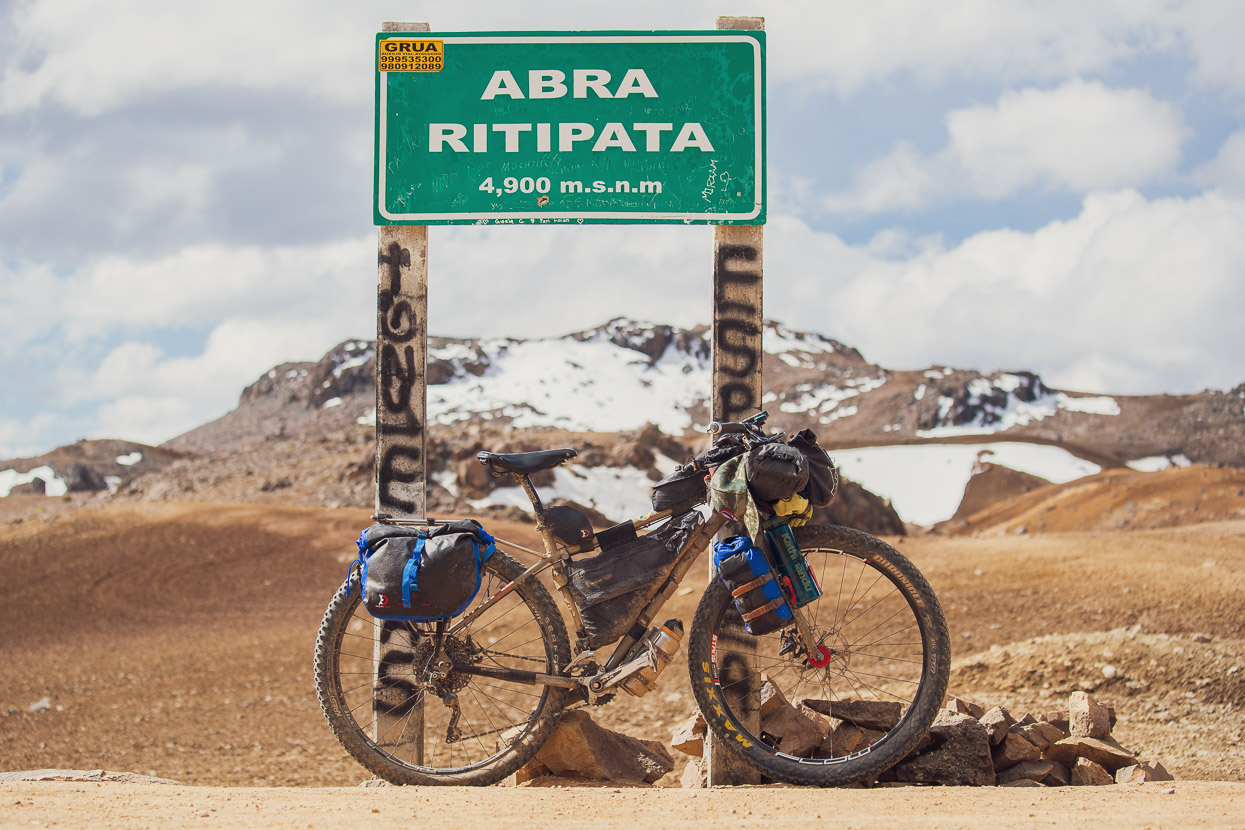
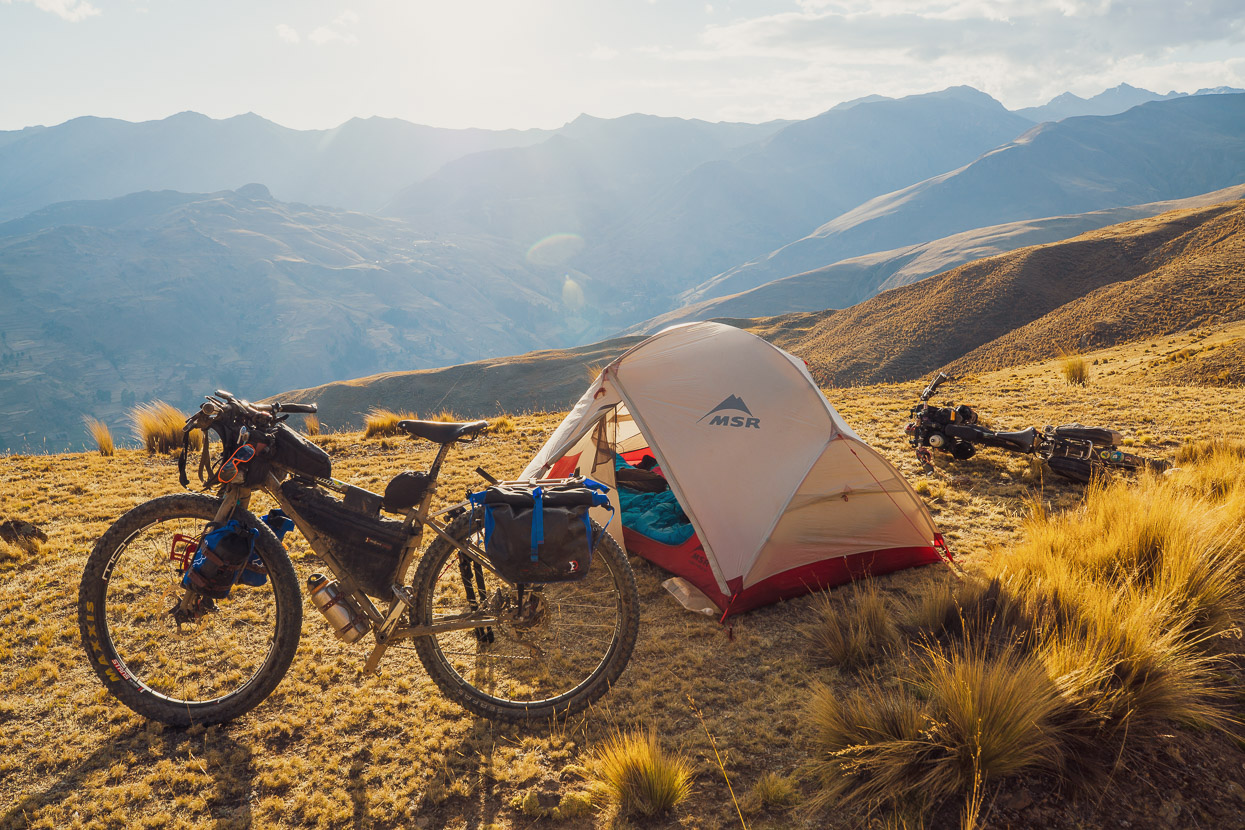
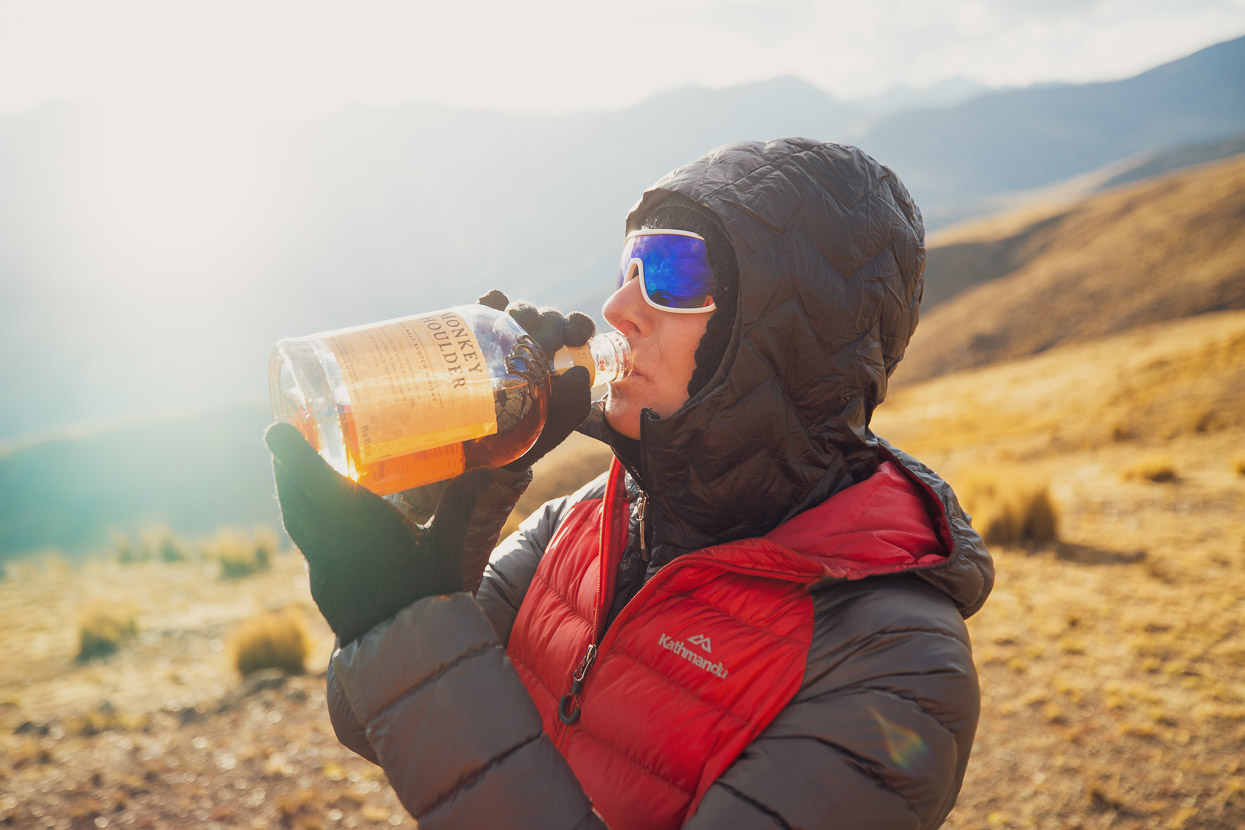
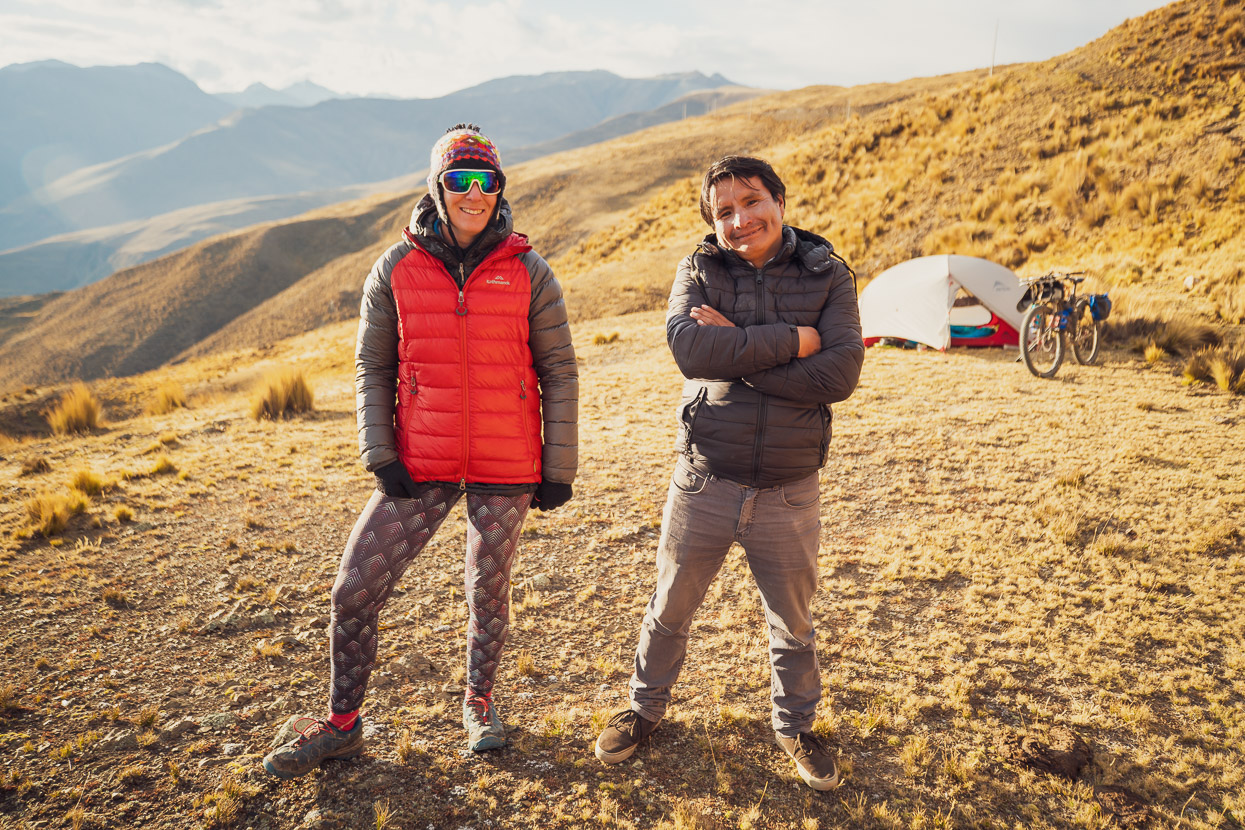
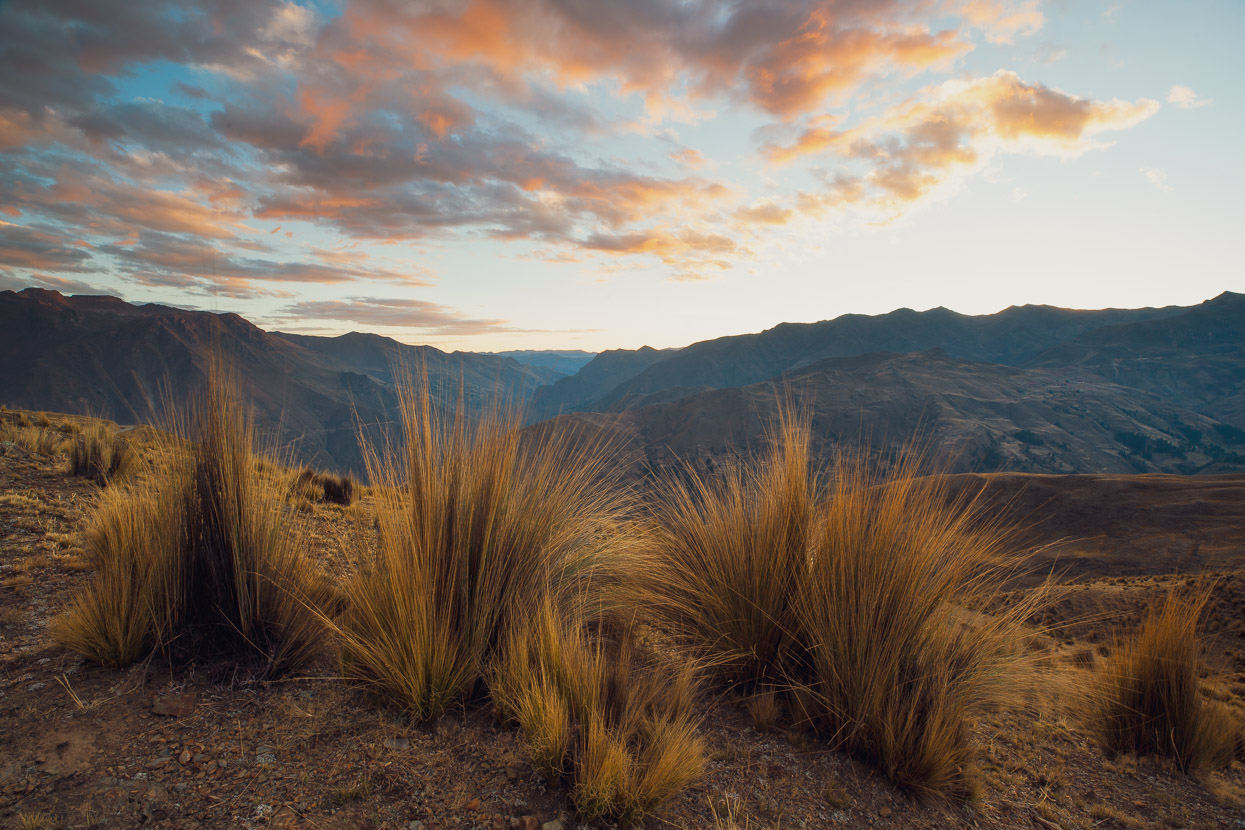
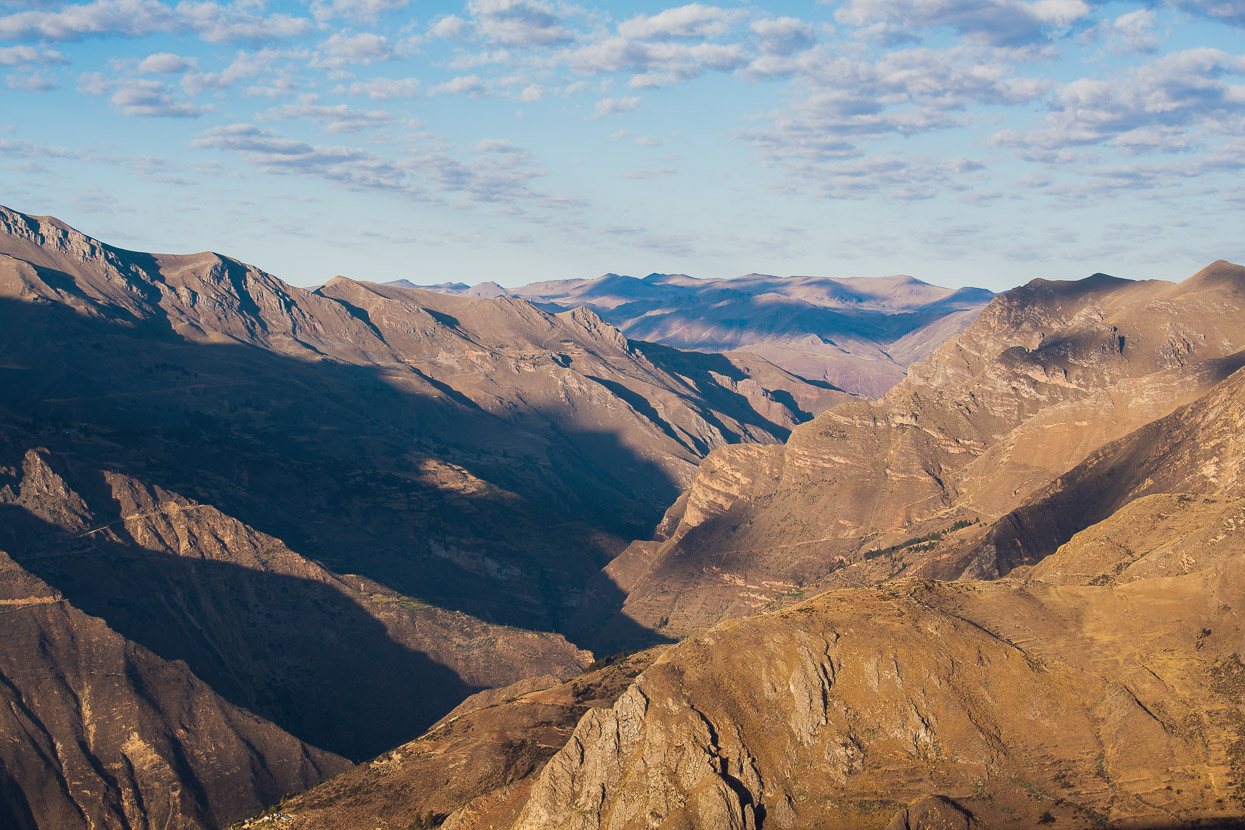
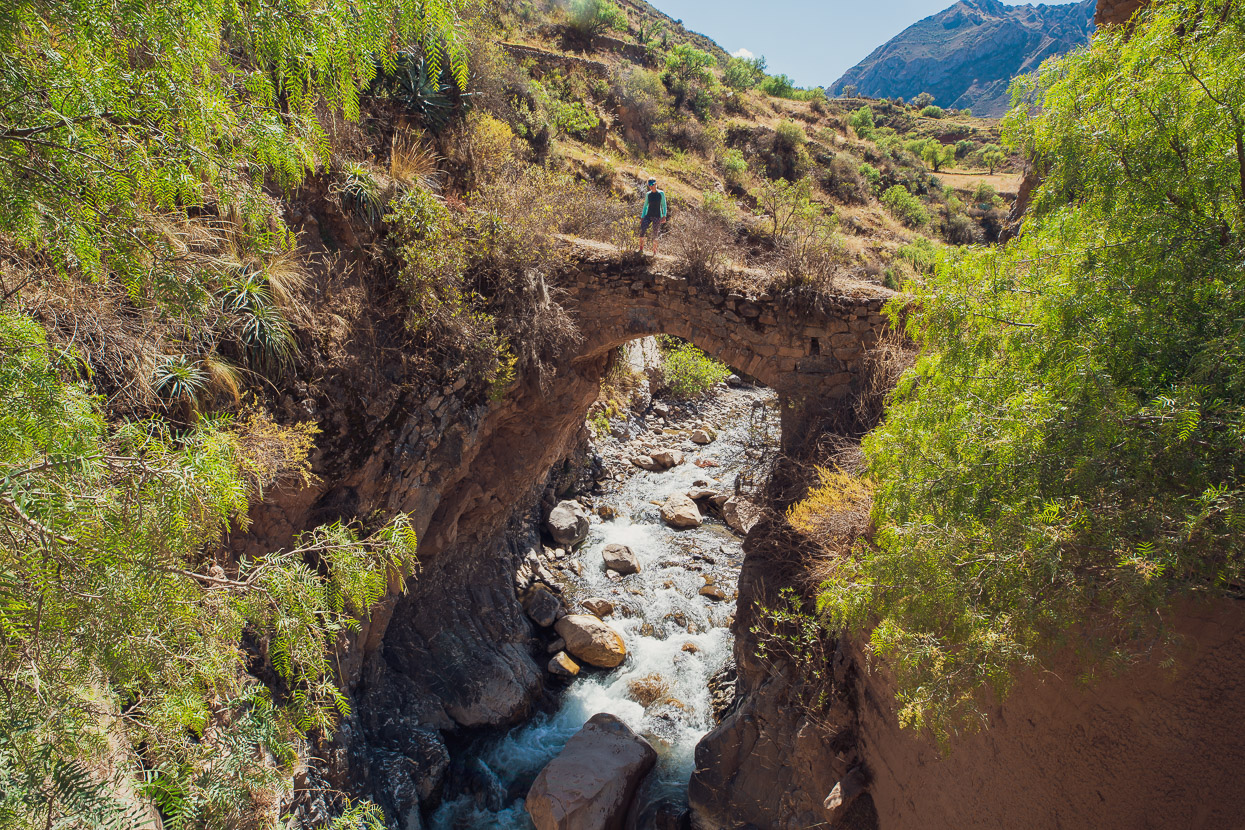
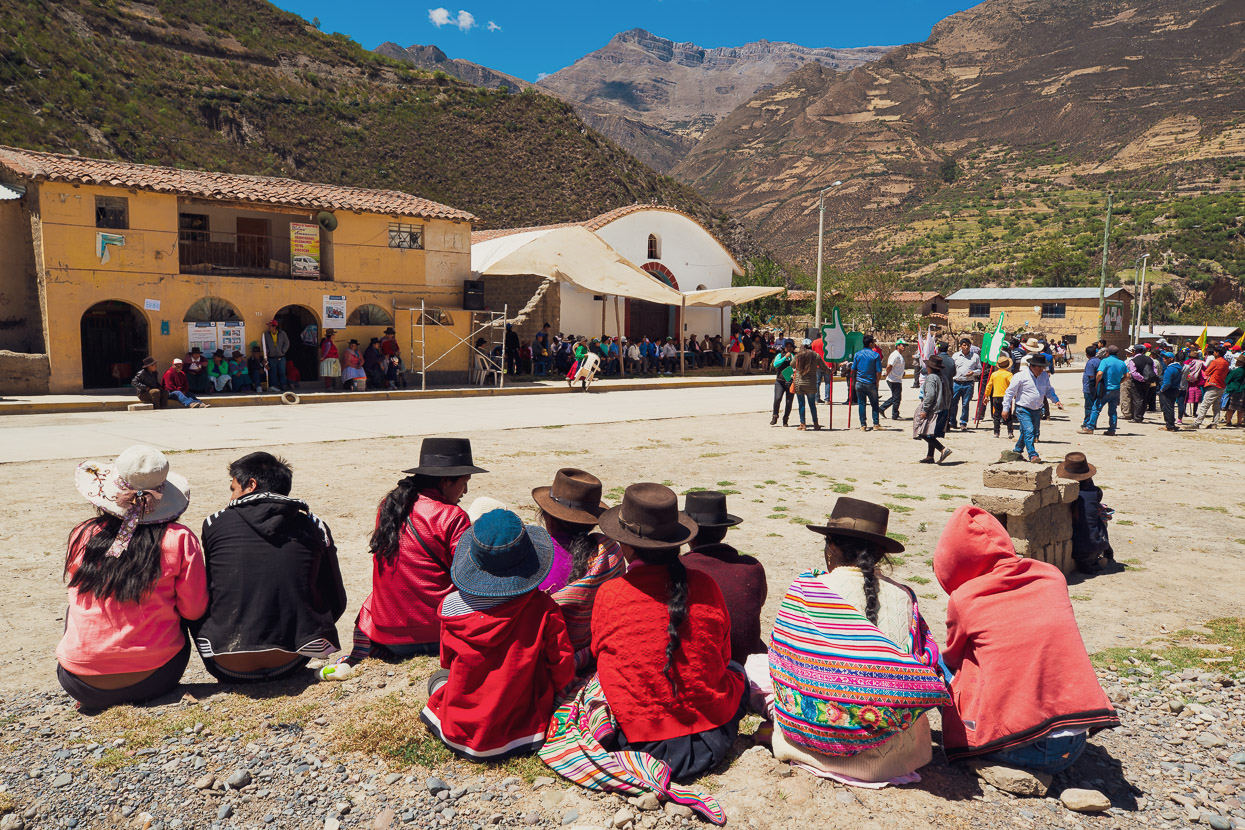
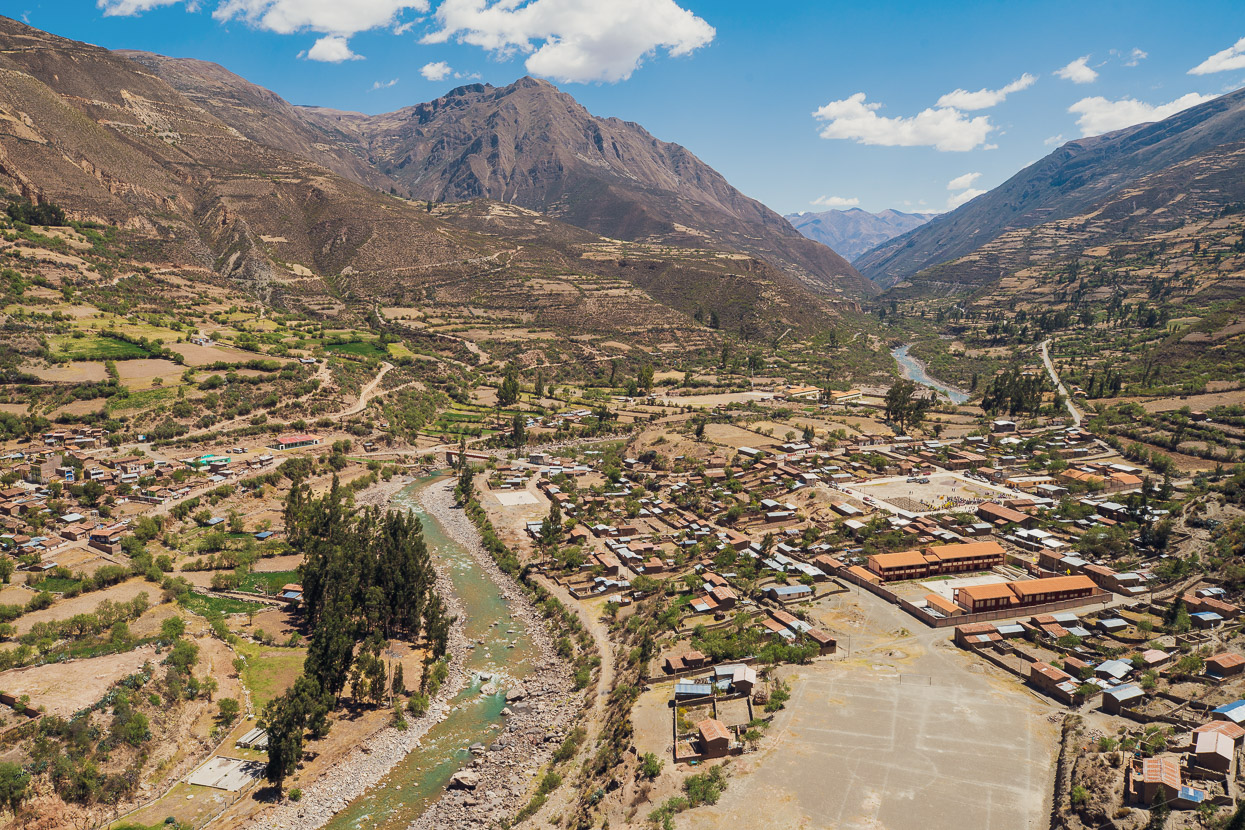
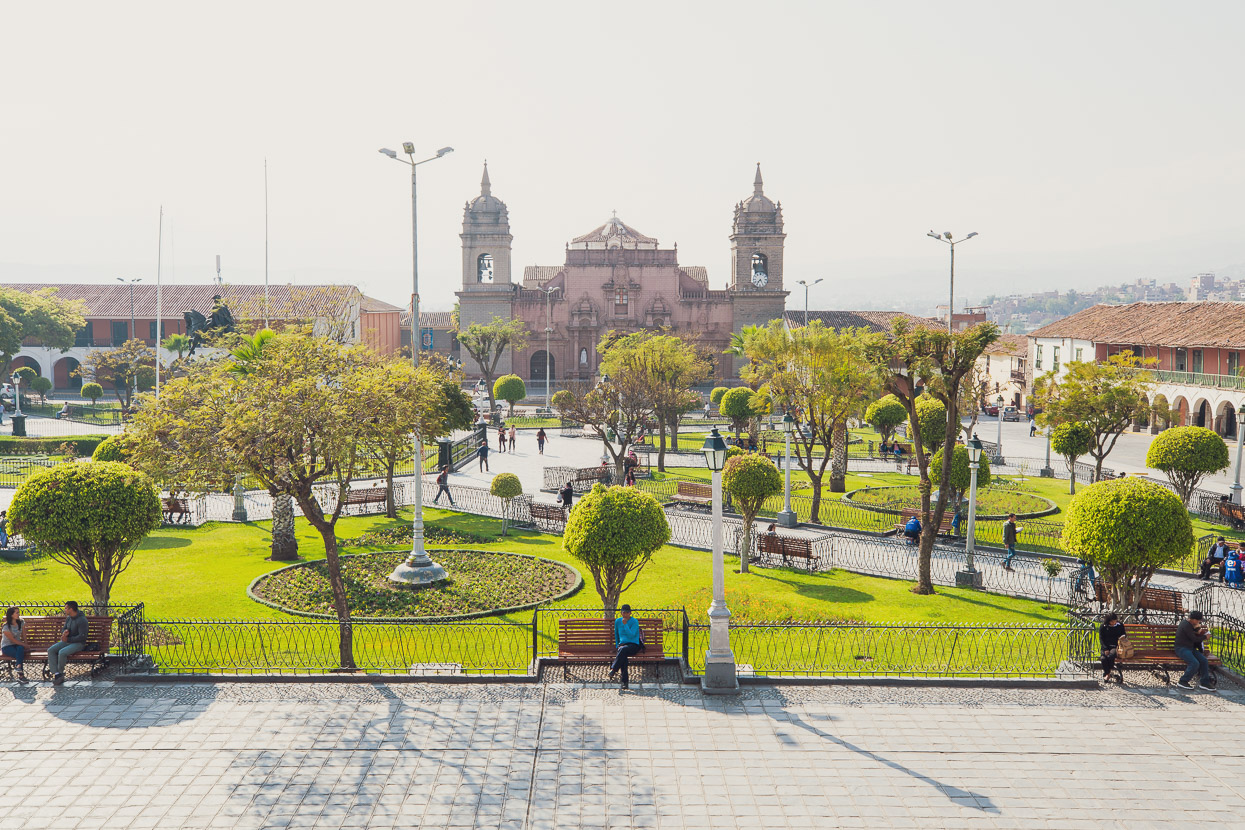
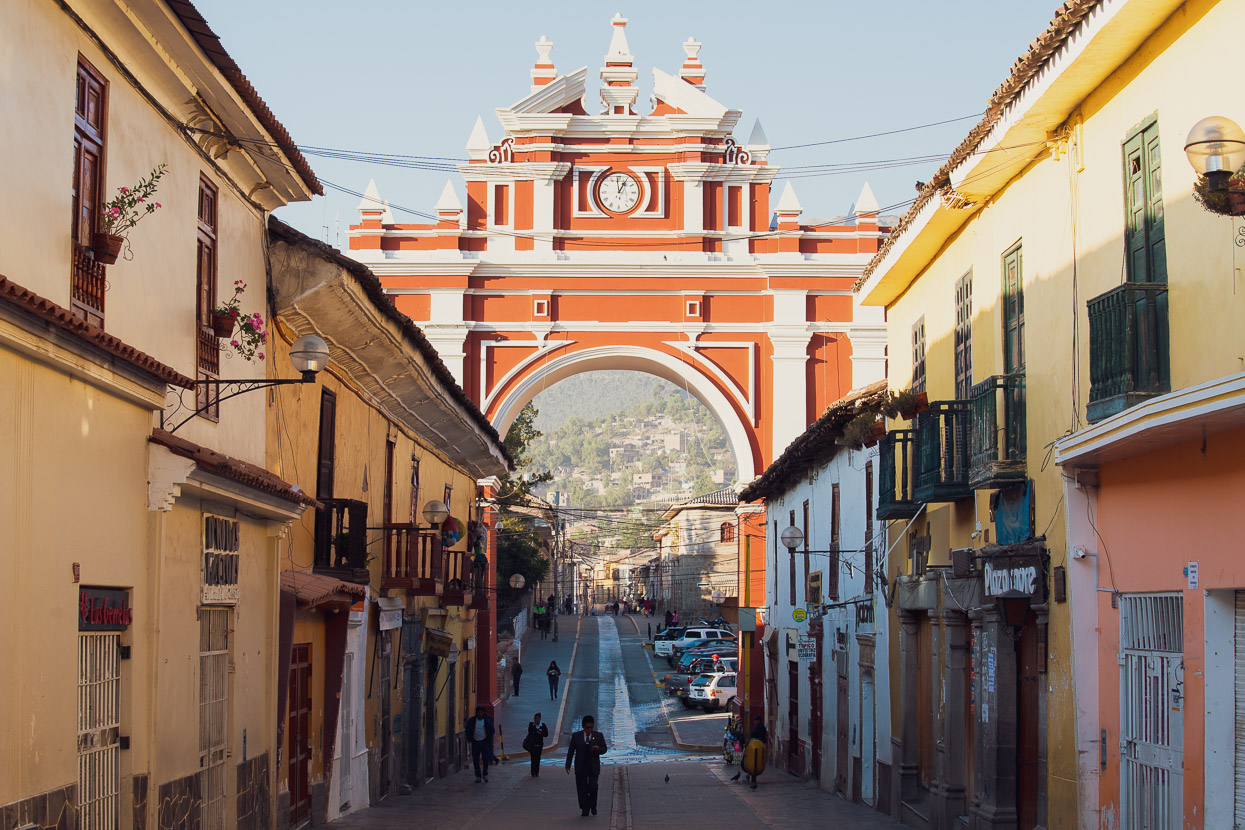
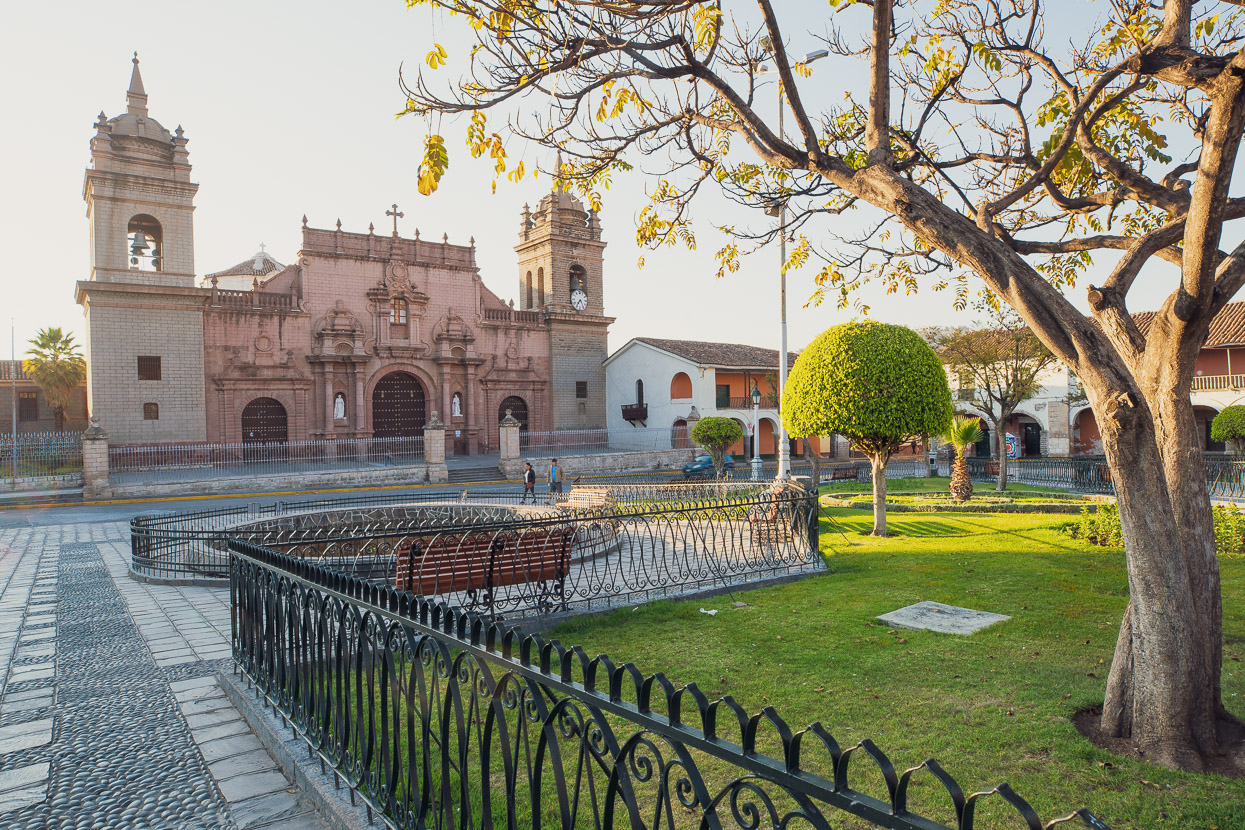
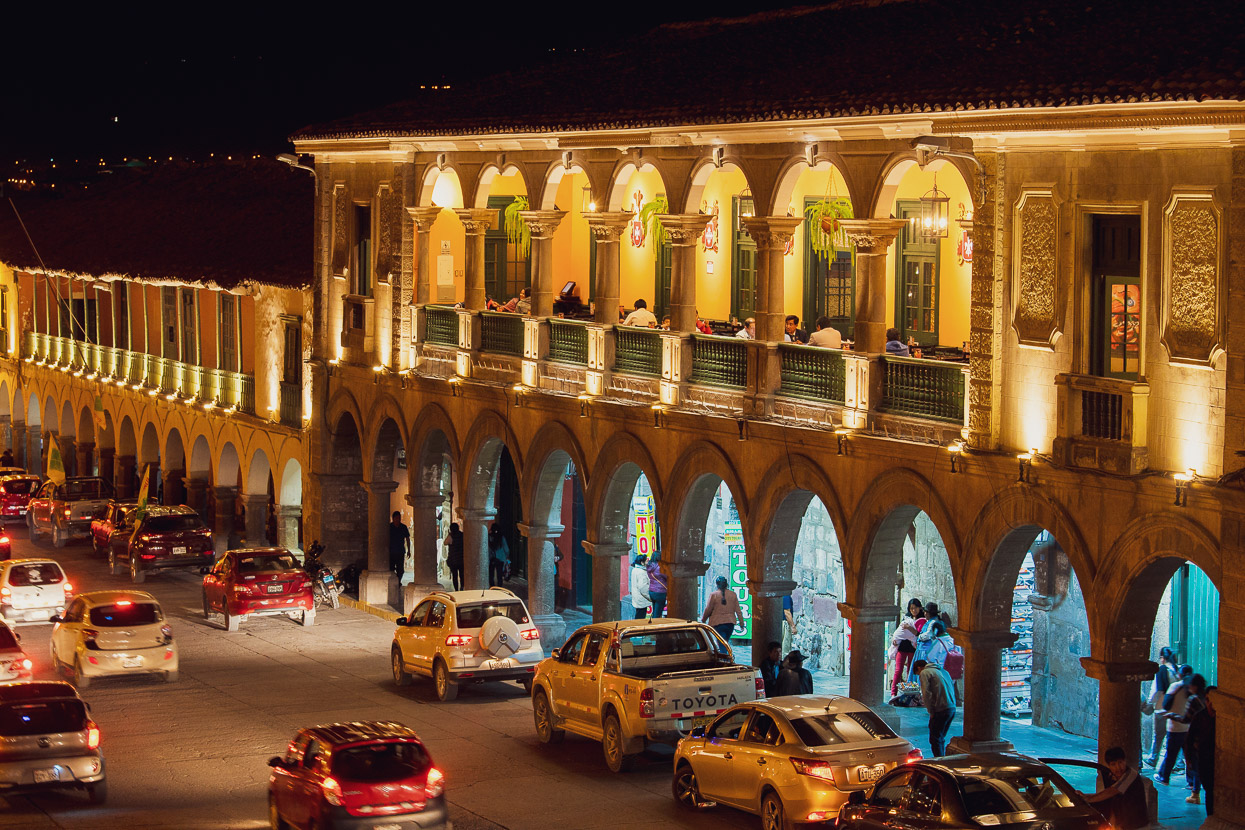
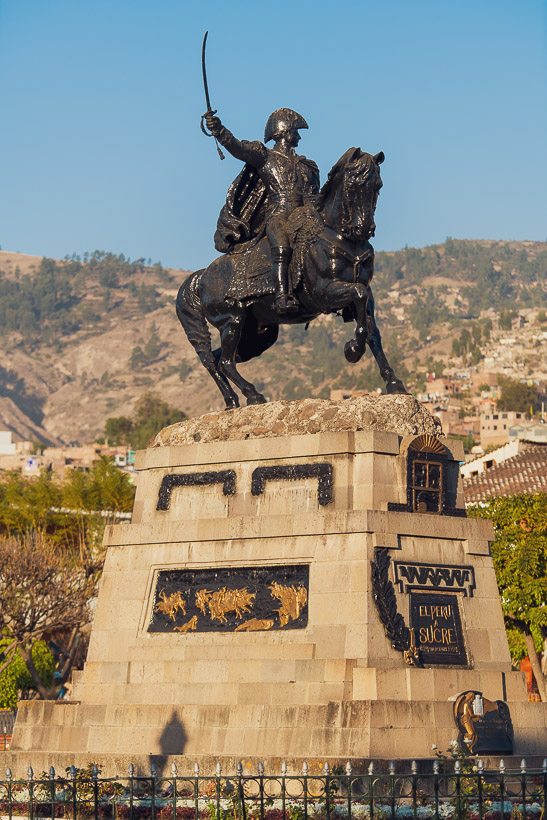
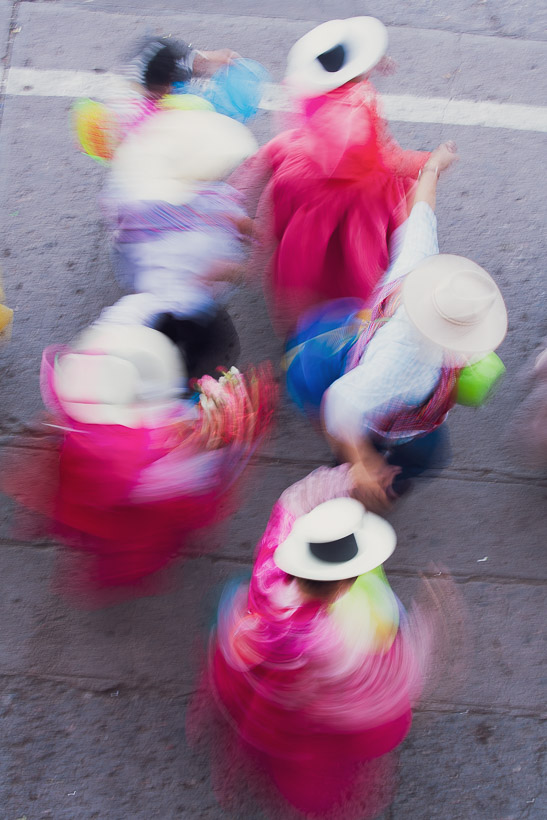
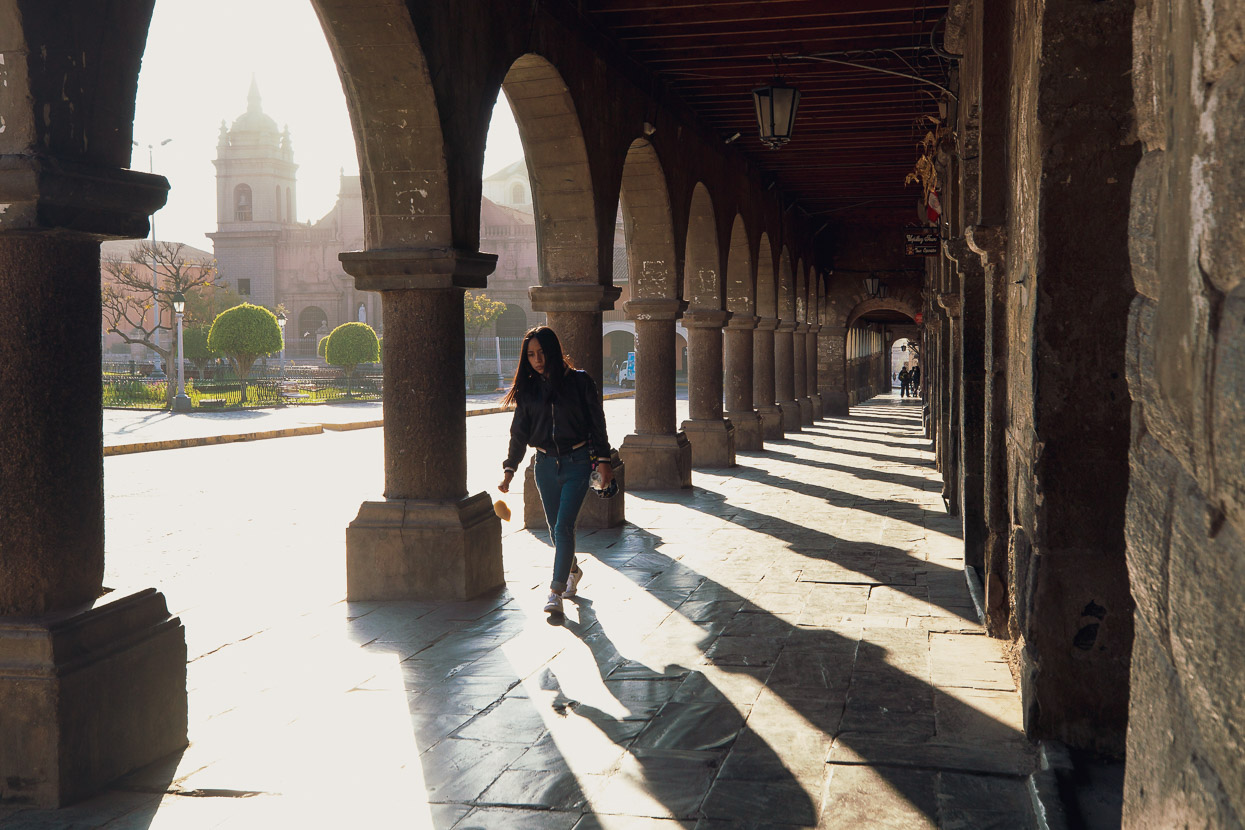





Fascinating as always. Yay, Sounds like a documentary coming up ? Can’t wait ! Like N. Z. Farmers, do the Alpacas have a different coloured ear ring for each year ? I am very impressed, most of the children are wearing hand knitted jerseys/hats, which speaks volumes for the womanfolk.
When you take into account the amount of snow on the mountains, the Rio Pampa, doesn’t carry that much water. Do you pick the coca leaves growing along the road, Or do you have to buy it ? Travel safely.
Hi Madge – as always it’s wonderful seeing your interest in the posts. Thank you. And thanks for the questions. You are very observant! The alapaca tend to be community farmed, but the animals do belong to a certain farmer – hence the tags, although I’m not exactly sure of an particular significance with ear tag colours etc, apart from to identify who owns the animal. We buy the coca leaves at markets and in small shops. It’s grown at lower, more tropical elevations. It’s the end of the dry season, so that’s why the rivers appear so low. In about three months they’ll be brown and raging, I believe. 🙂
hey, is new (prototype?) revelate design panniers on your bike? Im talking about blue ones. Thx
Hi – they were custom made for me by Revelate Designs. It’s possible that they might become a production item I think. Best you email Revelate and ask if they have plans to make more – as that might encourage them. They are excellent panniers. Perfect for bikepacking as they don’t rattle and are very narrow – so it’s easy to push your bike on hike-a-bikes.